Travel Report: Puglia
Hello from Puglia, aboard the train headed to Rome. Puglia was the last leg of our trip in Italy, aside from tonight in Rome before we catch our flight back to Atlanta tomorrow.
So, let’s cover what we got into in Puglia!
We stayed in a house just outside the city of Noci. It was a great property with beautiful gardens. It really felt like we were deep in the countryside even though we were a kilometer or two from town.
Here’s where we stayed.
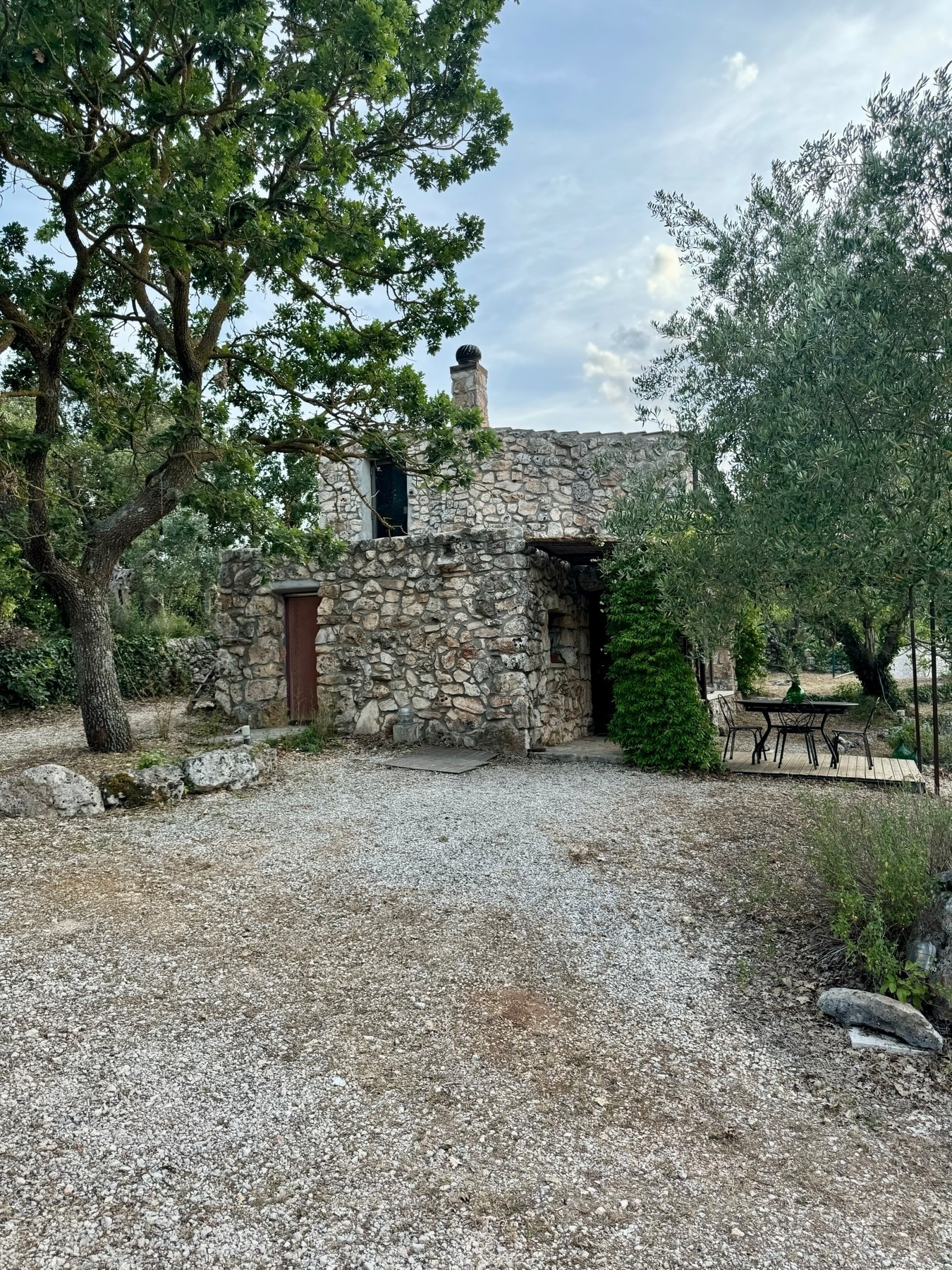
On our first full day, the main event was an e-bike tour around the Pugliese countryside. We started in Alberobello which is known for buildings with conical stacked stone roofs known as trulli. In fact, you can find these buildings all over Puglia, but they are concentrated in Alberobello, and some have been converted into shops and hotels.
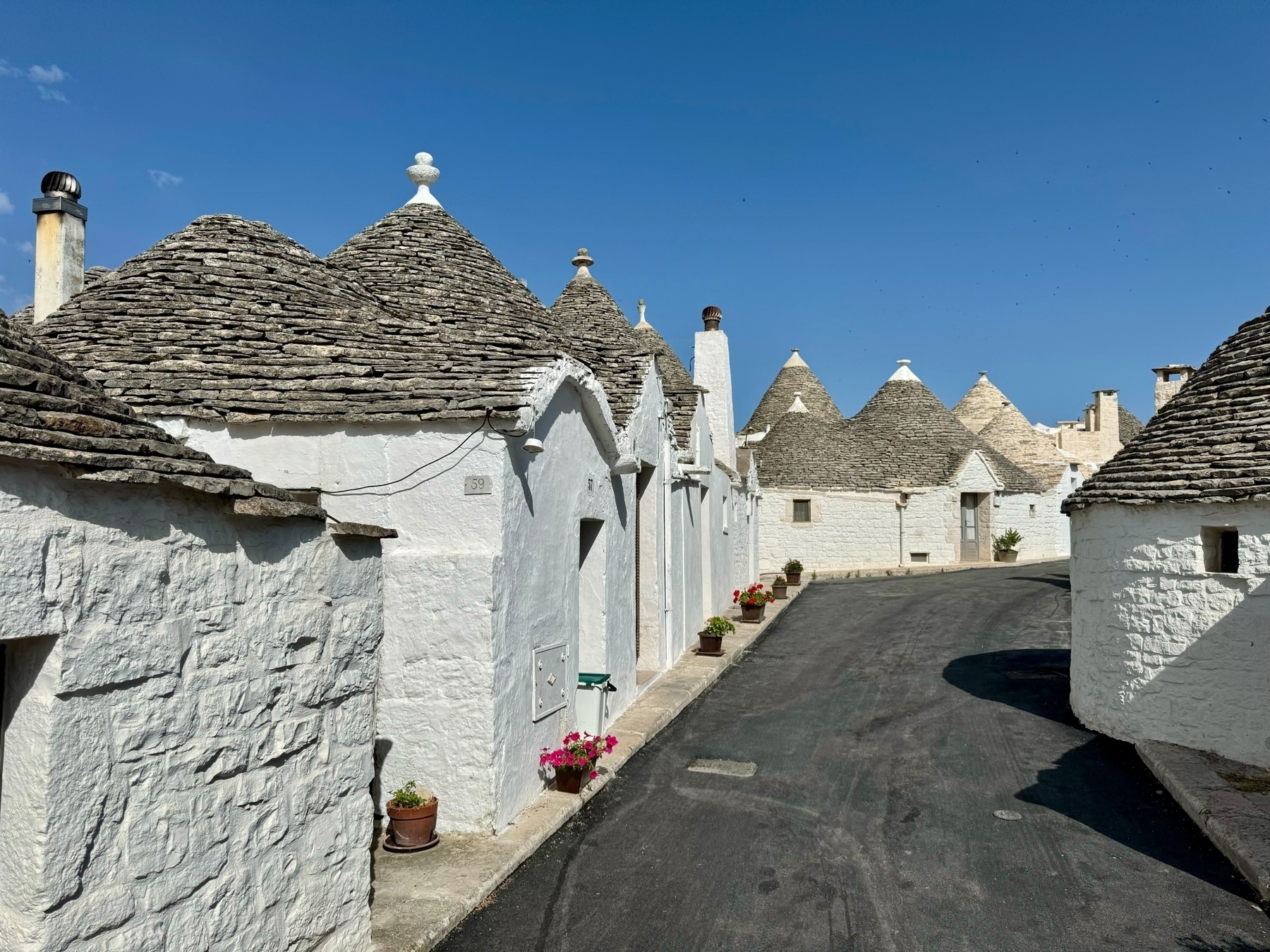
We spent some time here, seeing the trulli up close and we even were able to enter one. These buildings are often 100s of years old and very rustic. Living in them can be a hard life, since you don’t have many modern comforts. We learned that for this reason, maybe 20-30 years ago, most people were trying to get out of Alberobello to live somewhere more modern. It wasn’t until relatively recently that it became more of a tourist attraction and owning a trulli became more desirable.
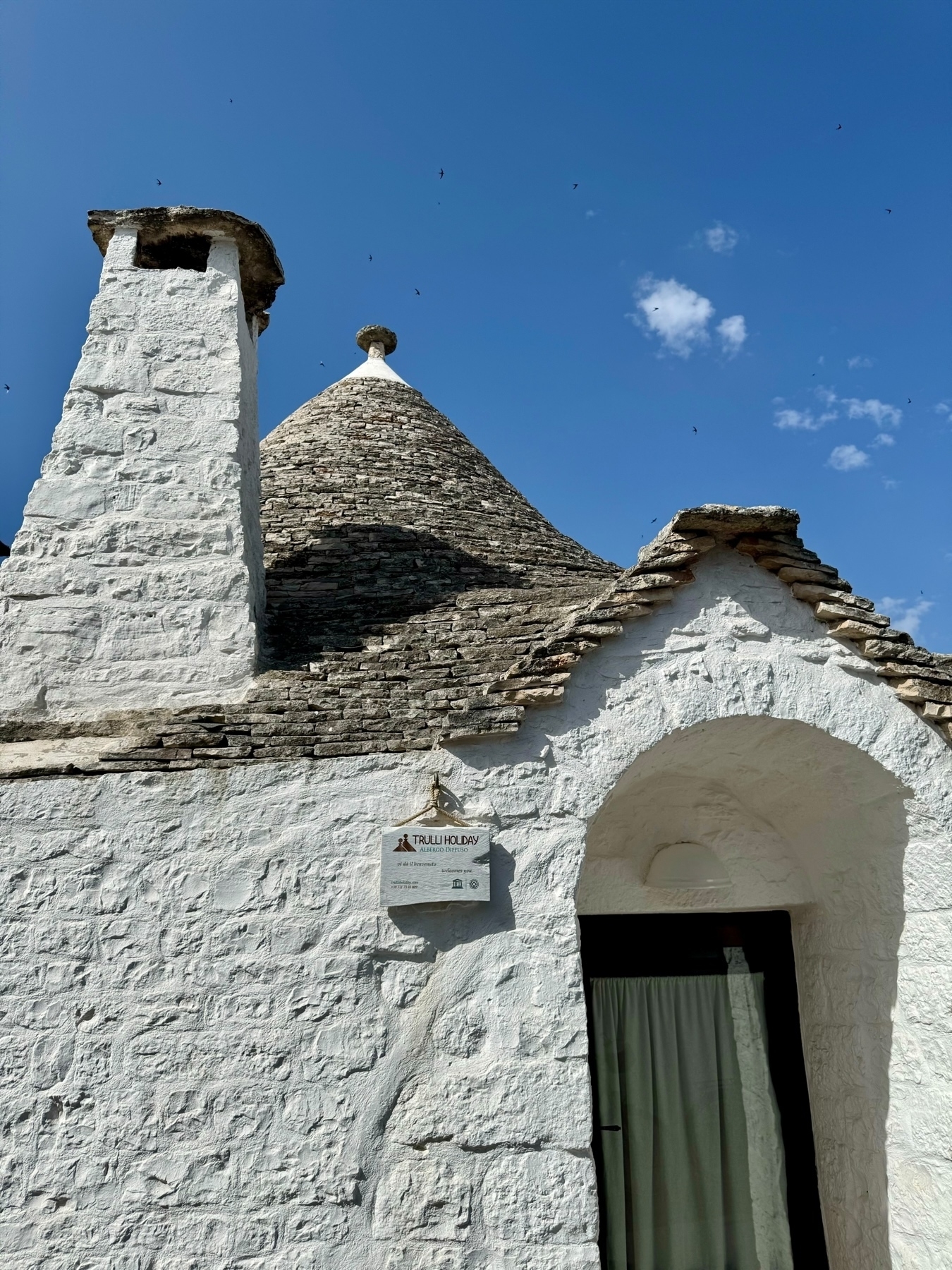
Us on our tour bikes in Alberobello.
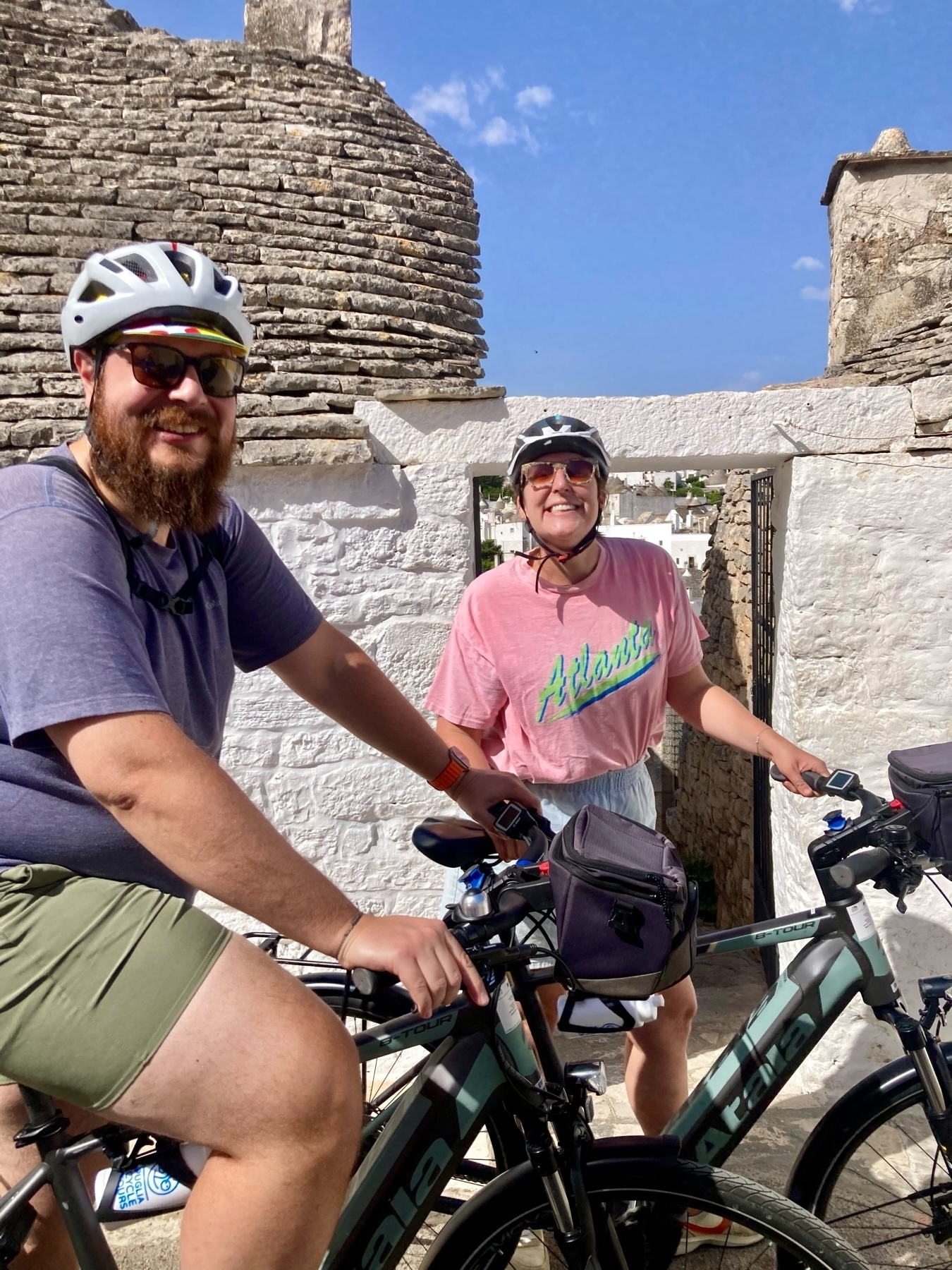
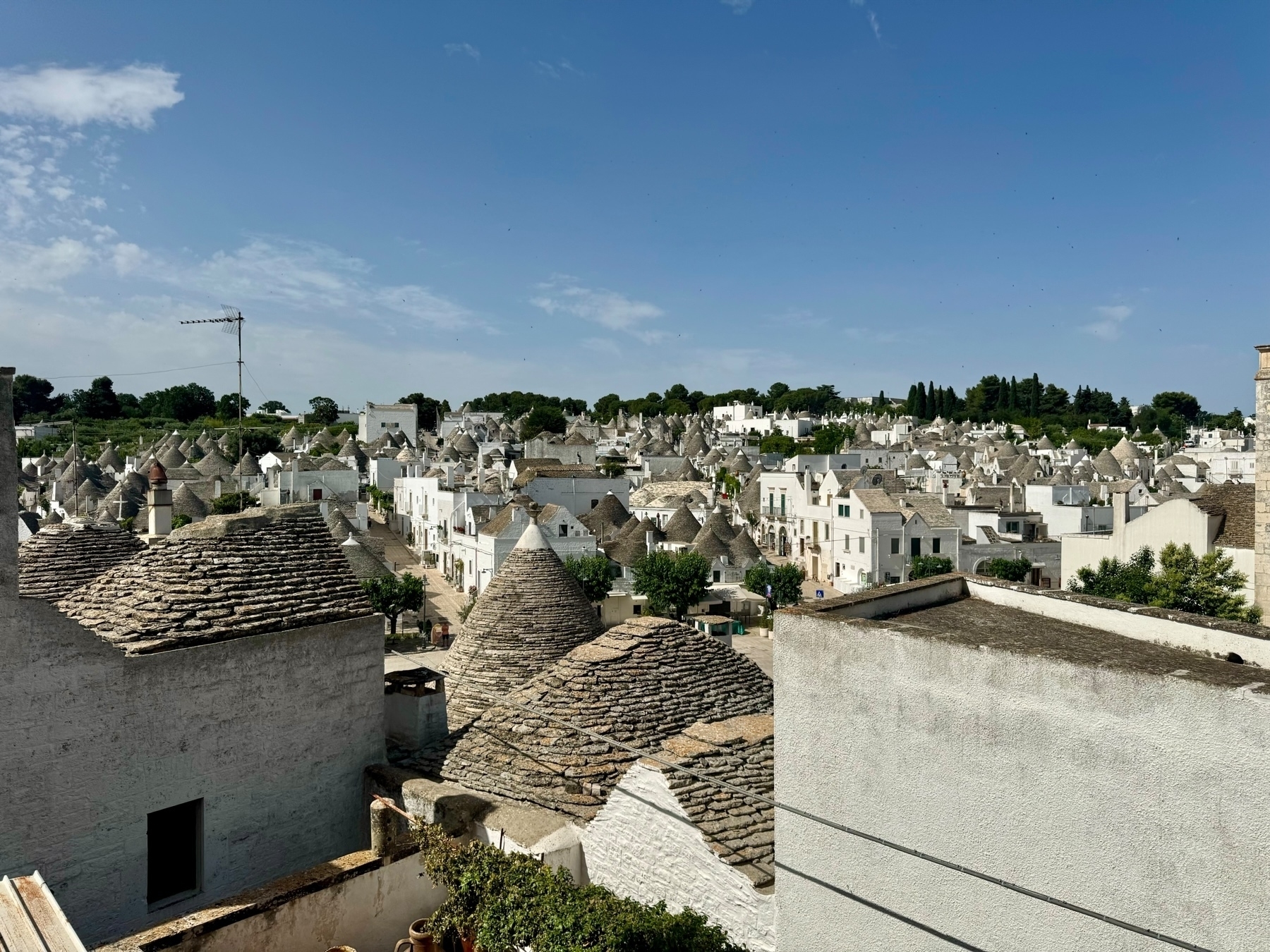
Us with our guide, Adriano, who was fantastic!
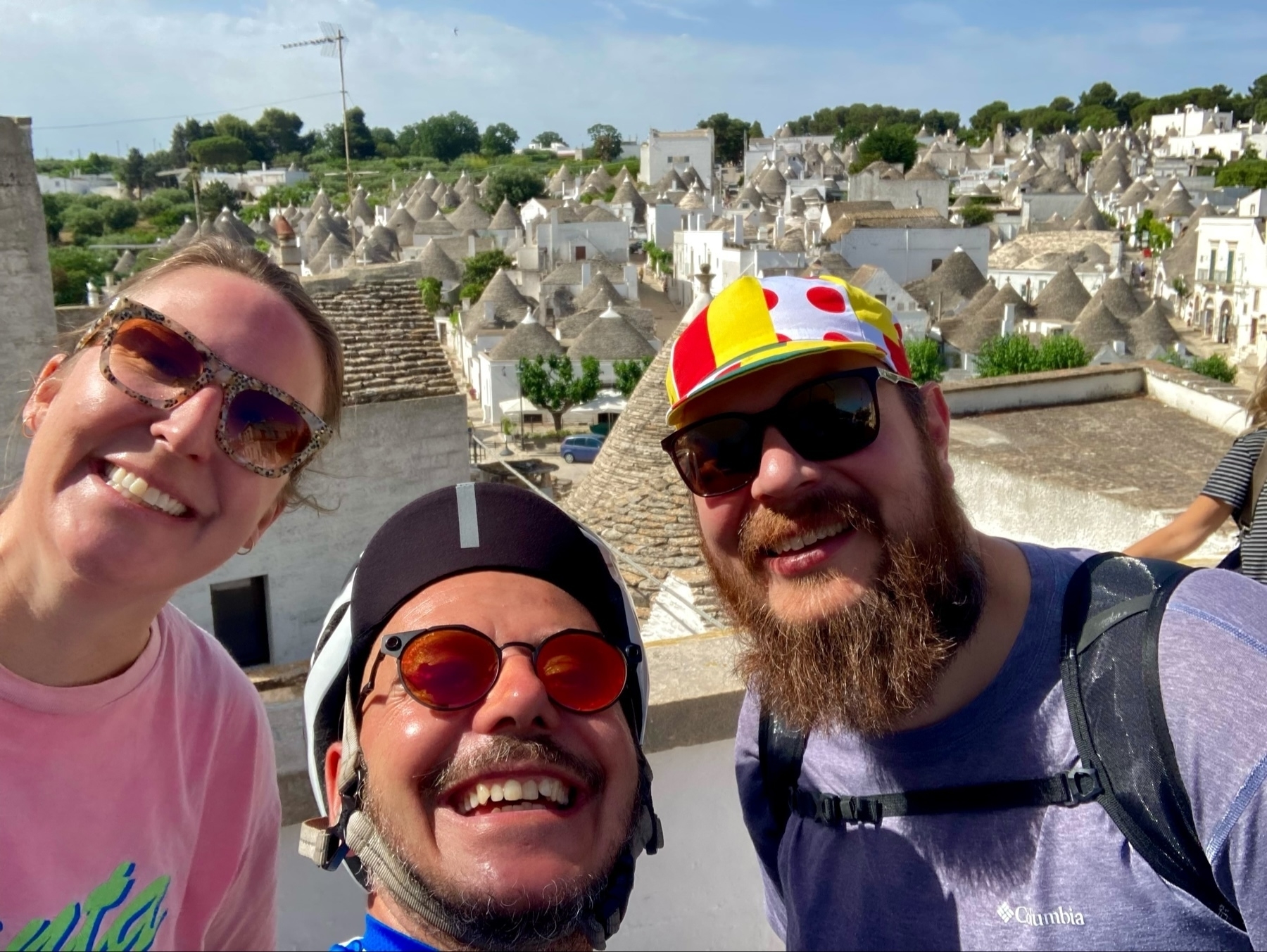
Our next stop was Martina Franca, where we stopped for a coffee break in this plaza. We drank caffè Lecce, which is espresso over ice with sweet almond syrup (more on this later). I’m glad we were introduced to this drink, because it’s great! Especially on a hot day.
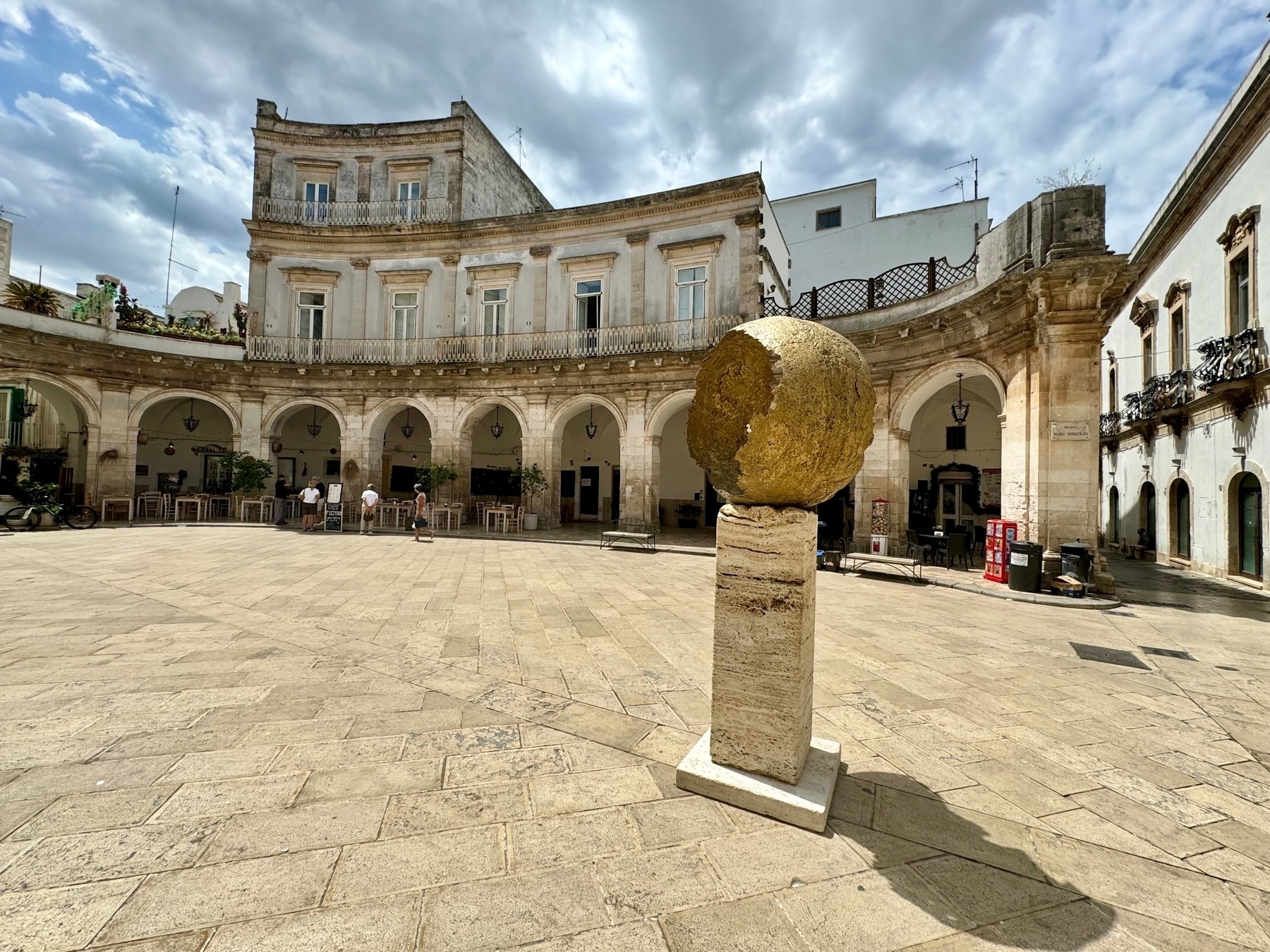
Us riding down a bike trail that was built along the path of a historic aqueduct.
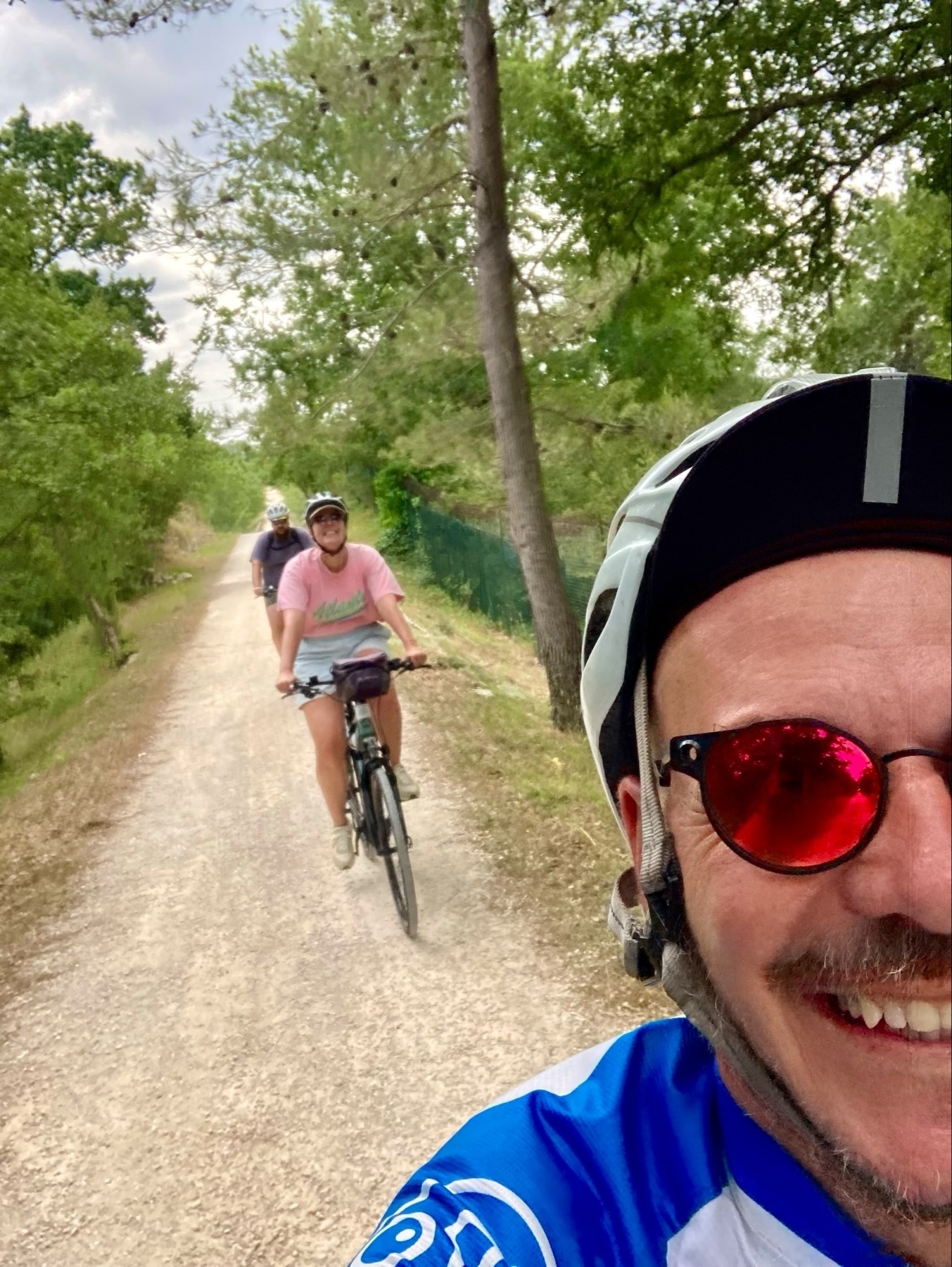
Locorotondo was the next stop.
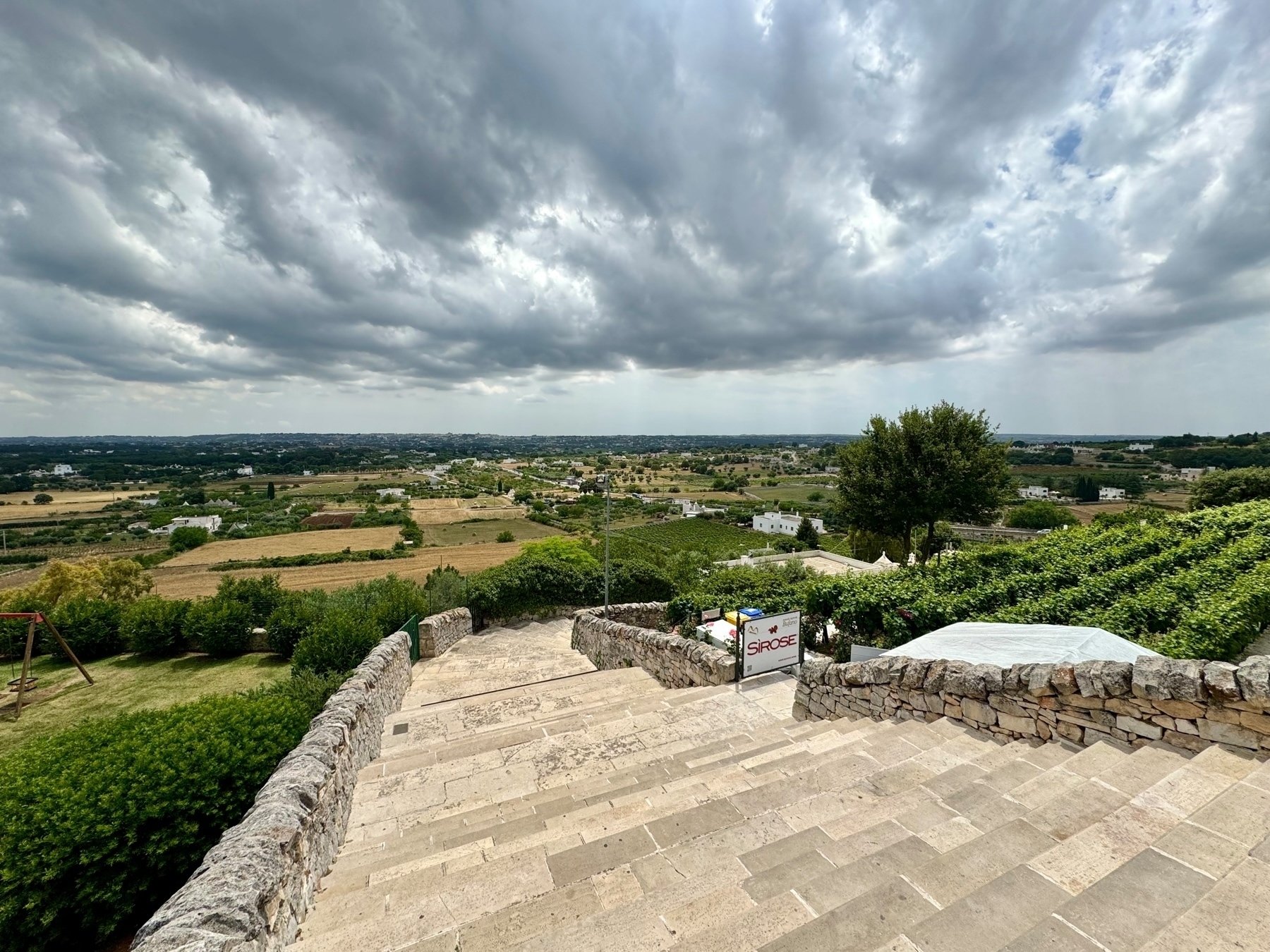
Here we had a “light” lunch featuring some typical Pugliese foods, such as cappicola, focaccia, bruschetta, burrata, and orecchiette. Everything was extremely delicious! I especially loved the focaccia we had in Puglia. Often it was made with a darker grain that gave it more flavor. I think the focaccia here is the best I’ve ever had.
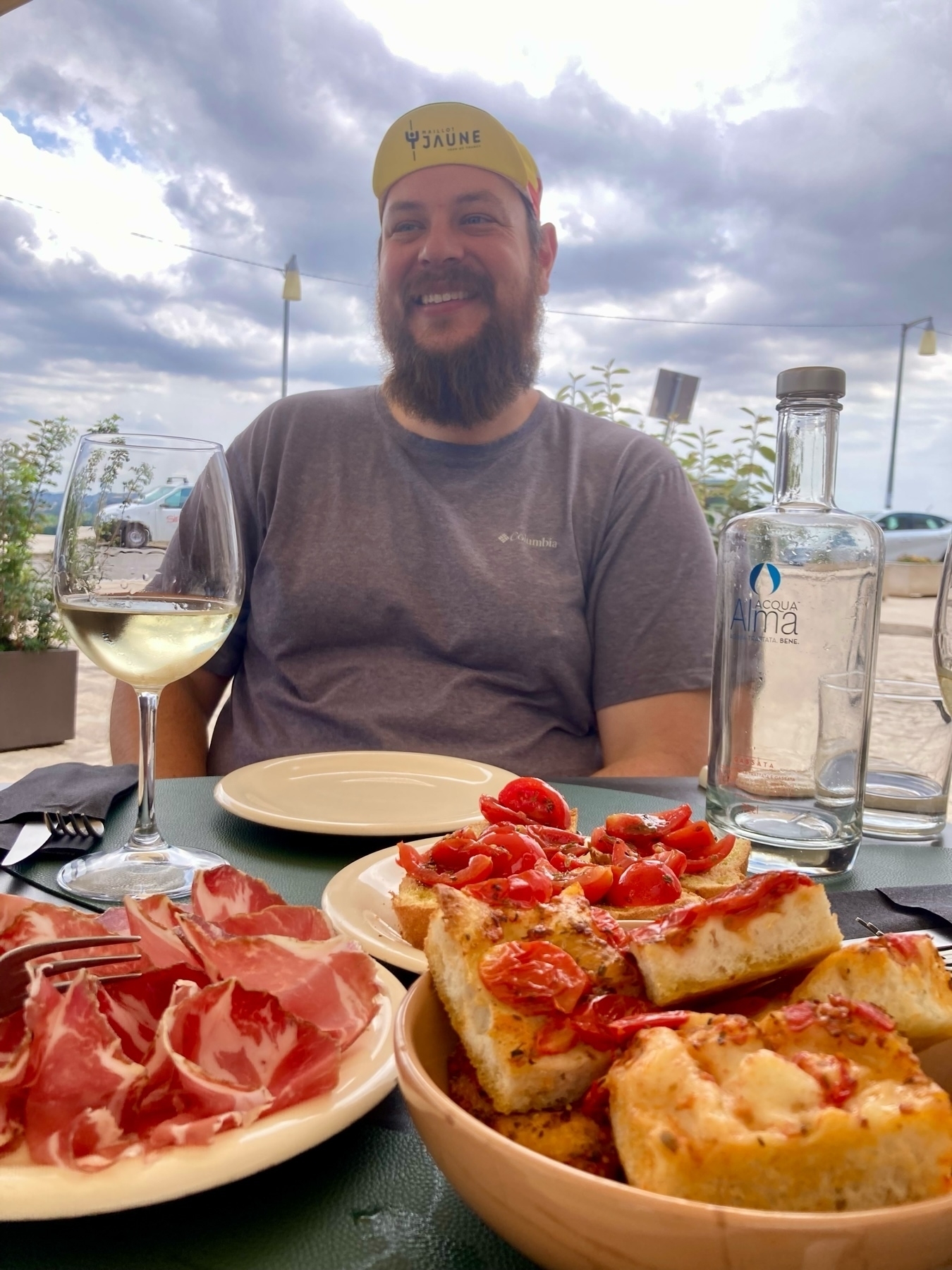
Our ride completed by circling back to Alberobello. I recorded our route on Strava if you are curious for more detail. At 50 kilometers, it was a long ride, but very fun! One of the best rides of my life!
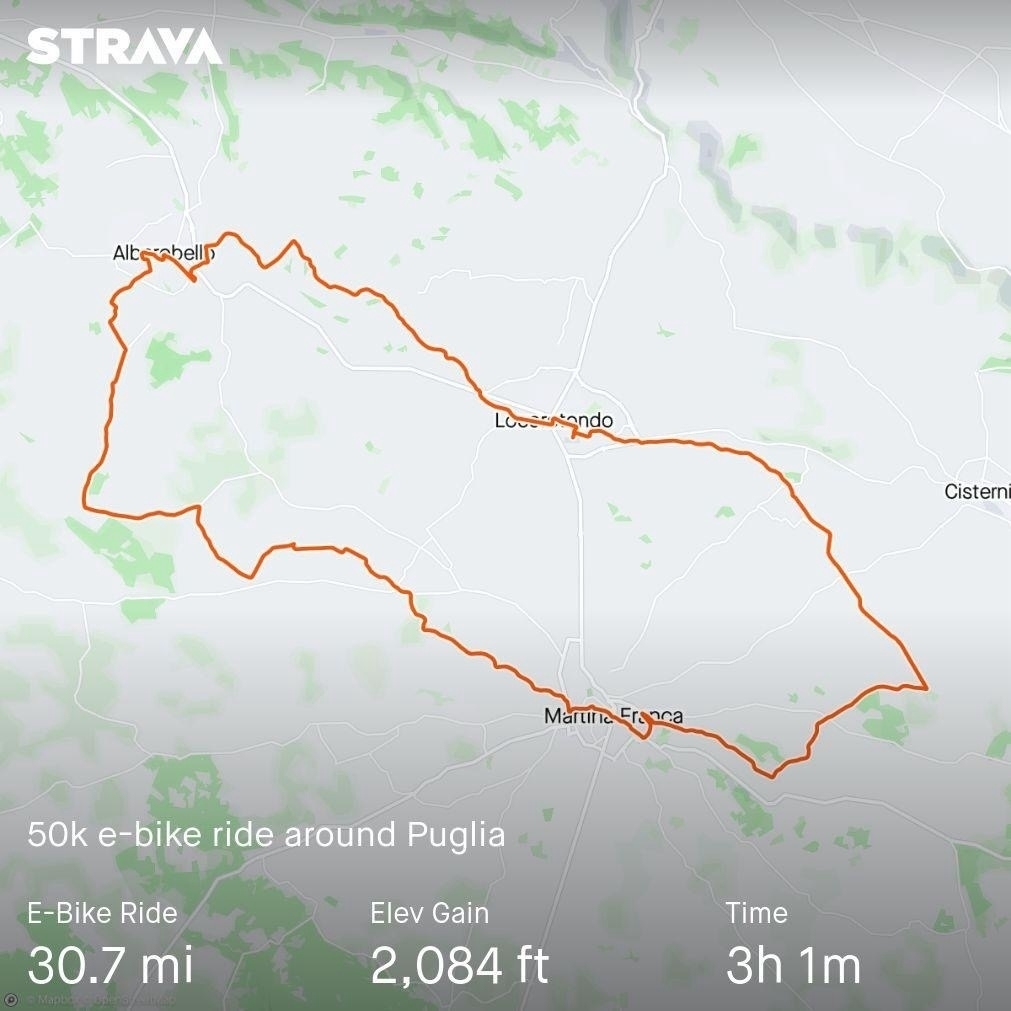
That night for dinner, we headed into Noci.
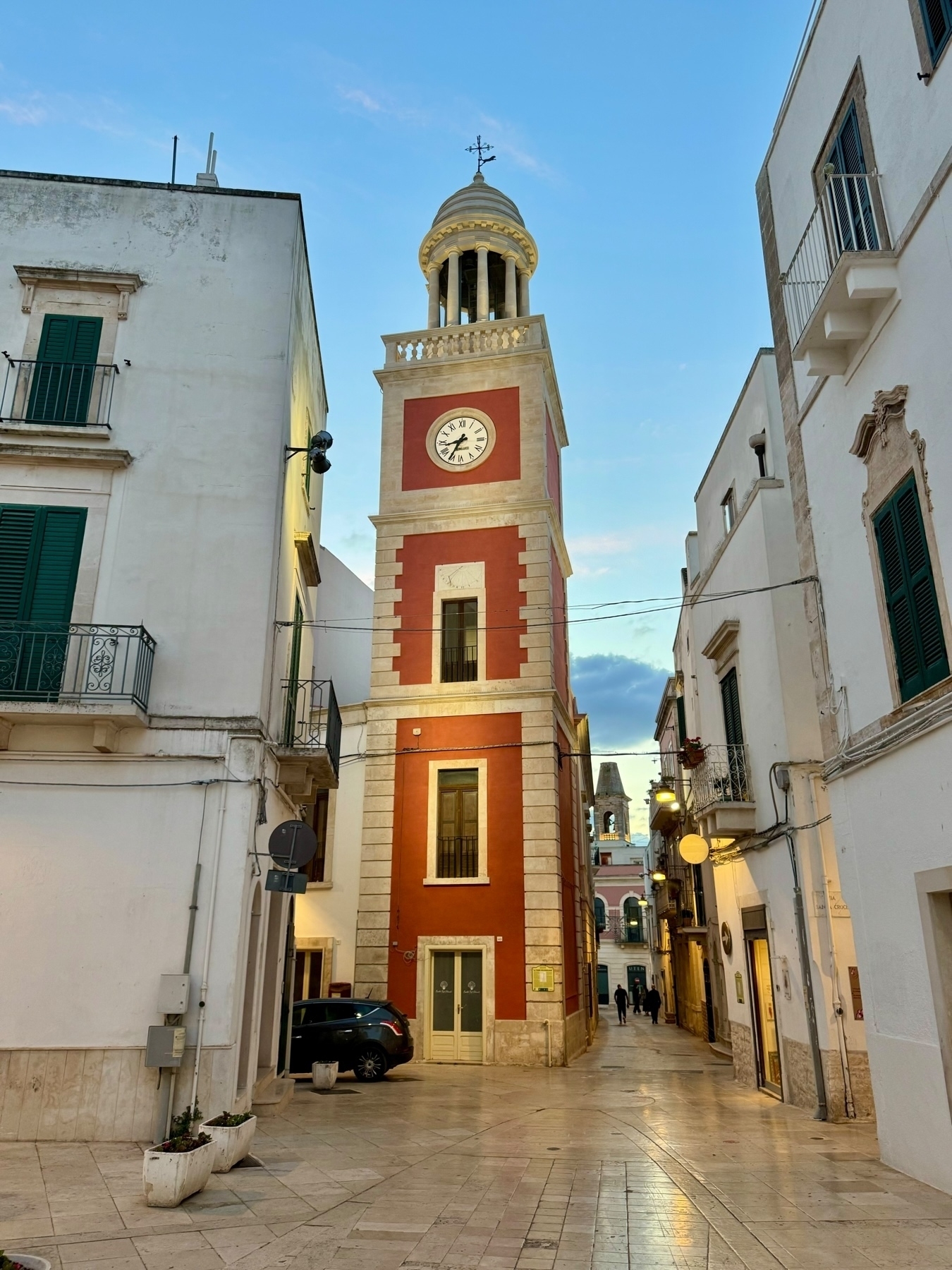
The next day, we drove south to head to tour a dairy farm that specializes in cheese.
One of the pens where cows are kept. We learned how the different pens are used to group cows that are different stages of their milk production cycle.
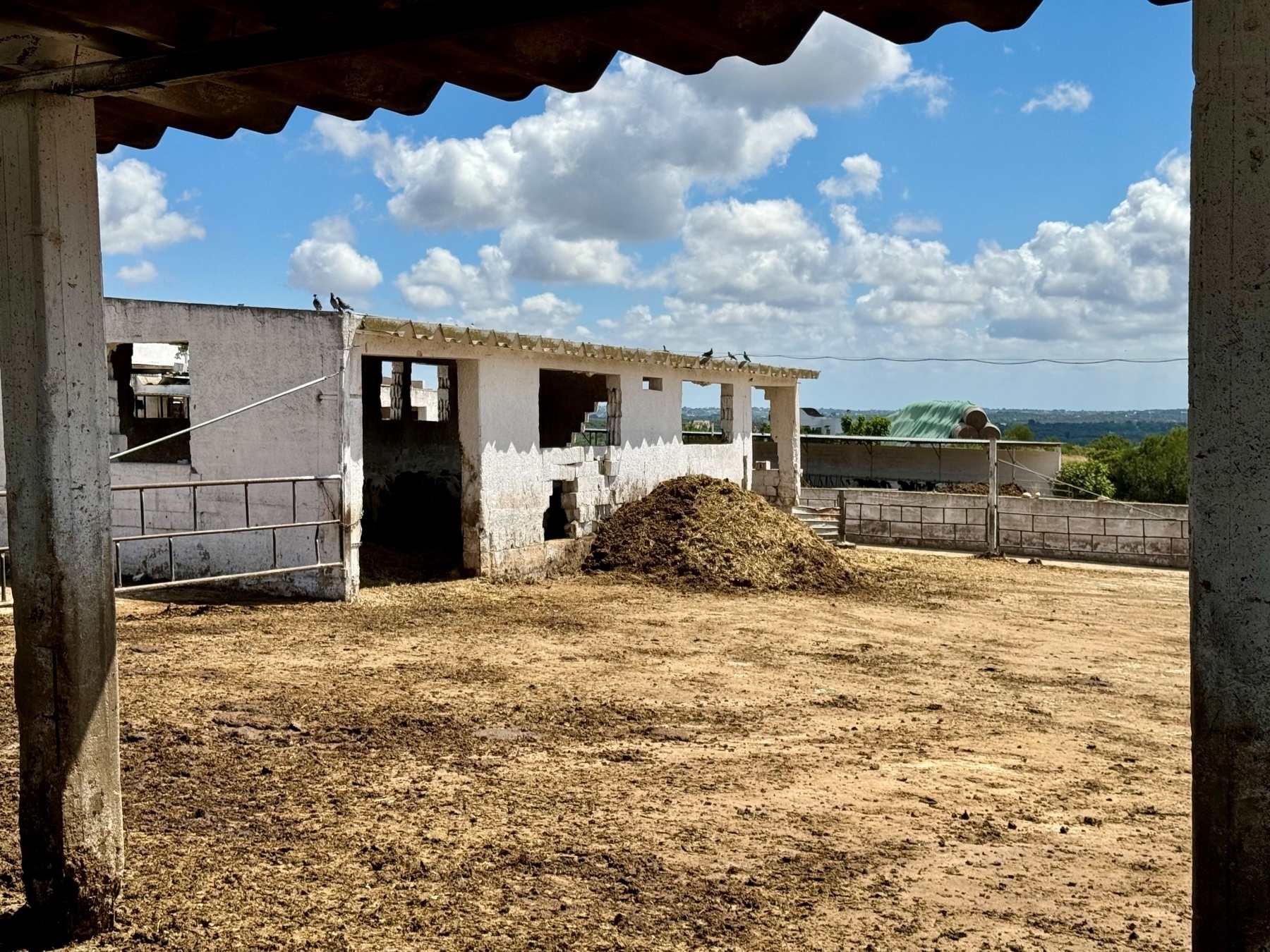
Some of their cows resting in the shade.
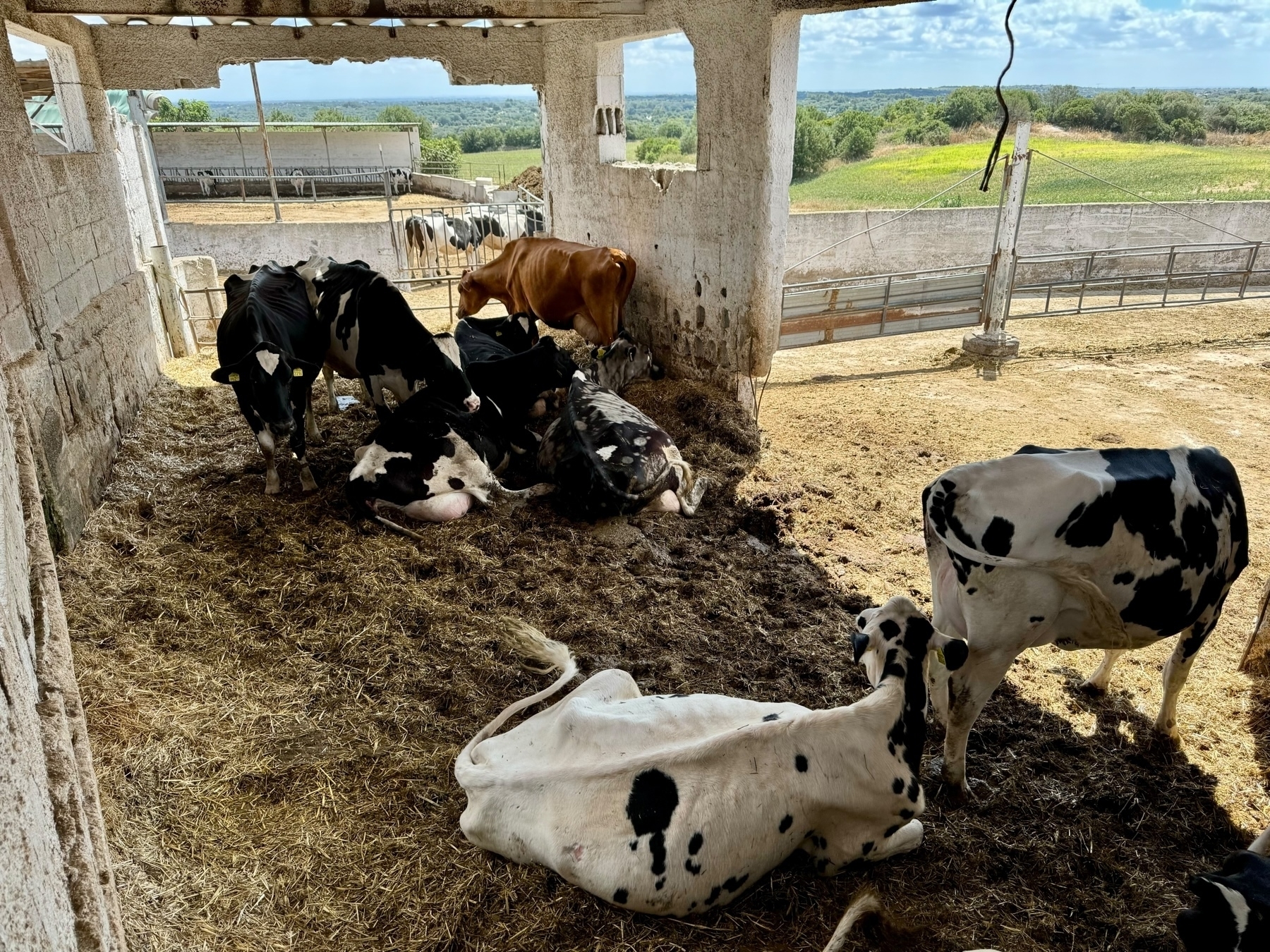
Then, we got to tour the cheese laboratory, as they called it.
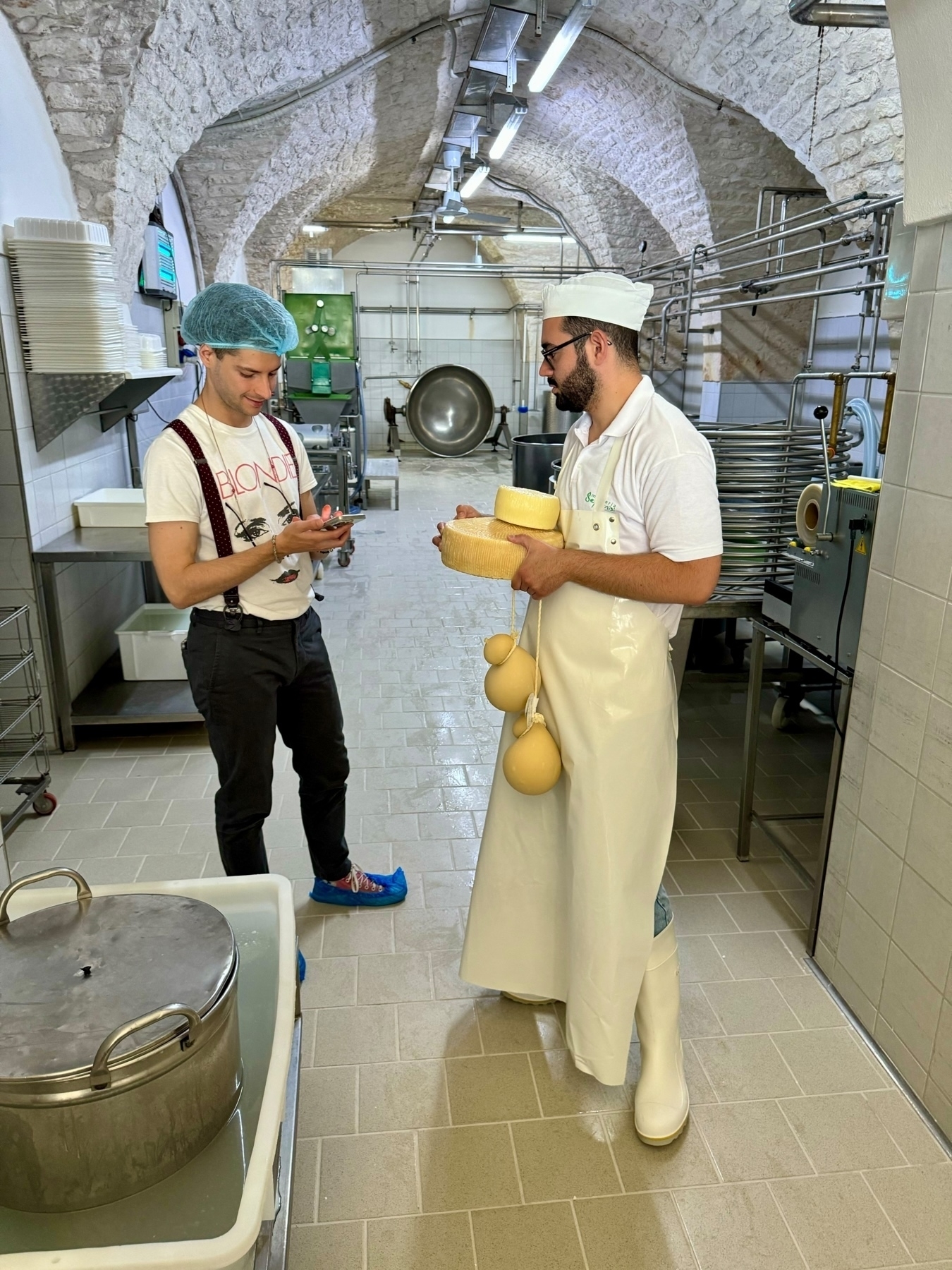
Hoping I got “accidentally” locked in the cheese aging room.
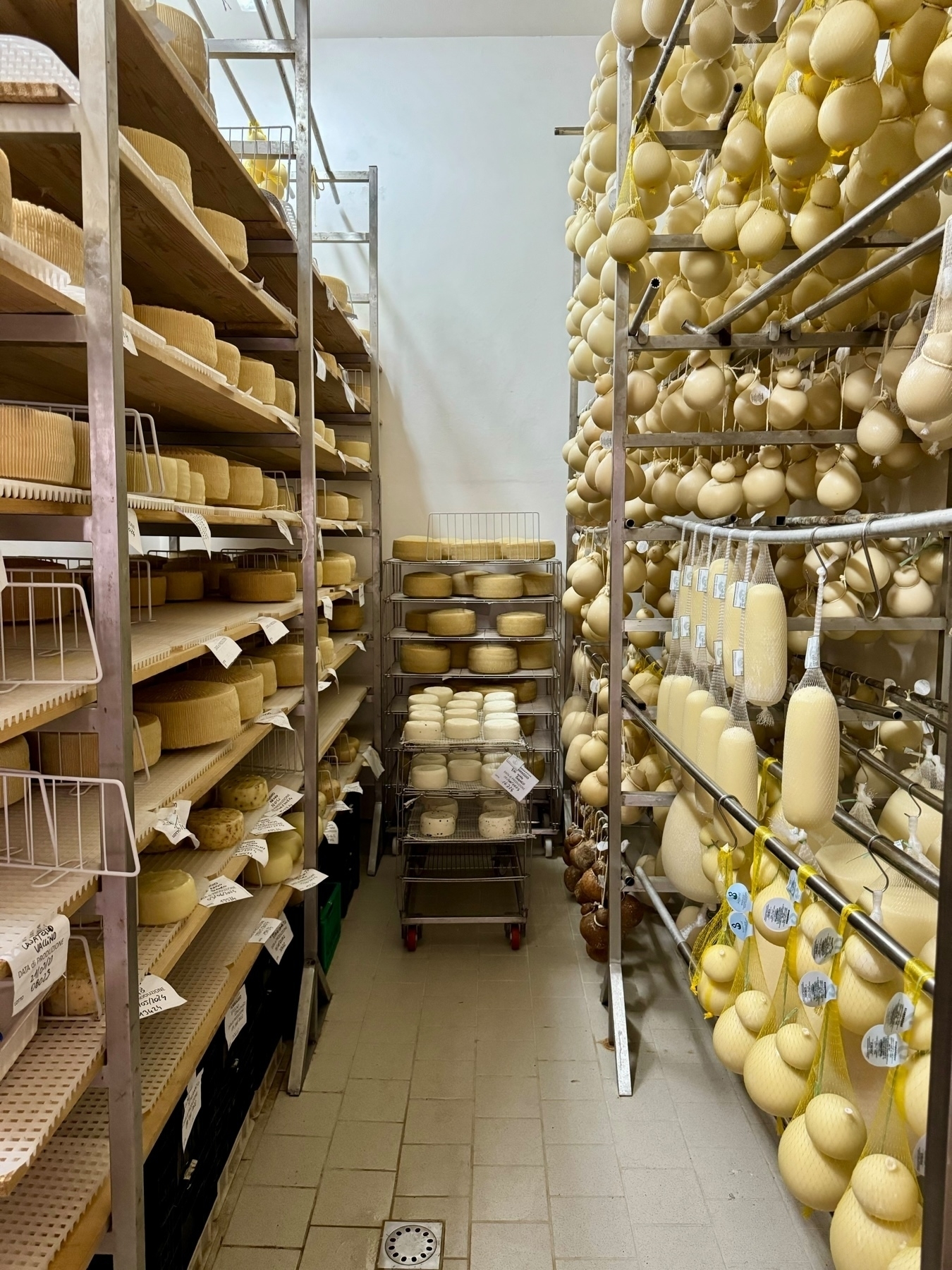
Then, the highlight of the tour, watching one of the cheesemakers demonstrate how to make fresh mozzarella. He explained that you only need 3 things for cheese: milk, salt, and enzymes.
For this demonstration, he started with fresh cheese curds and added salt and hot water then began to mix and stretch it with a wooden pallet.
Here the curds are being stirred with the added salt and water.

Now the curds are starting to come together and are being stretched further.
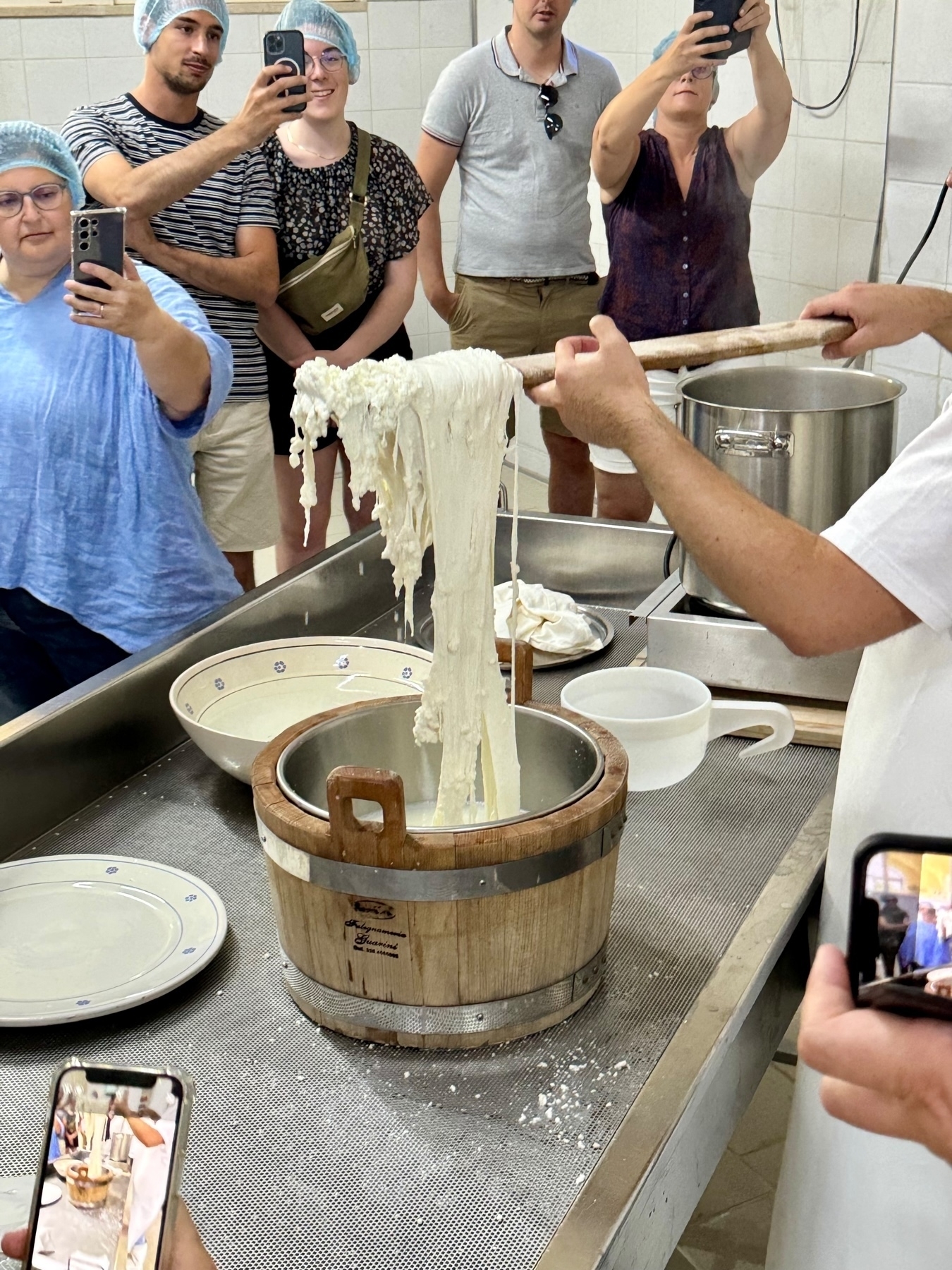
And the stretching is finished when he was able to stretch it above his head.
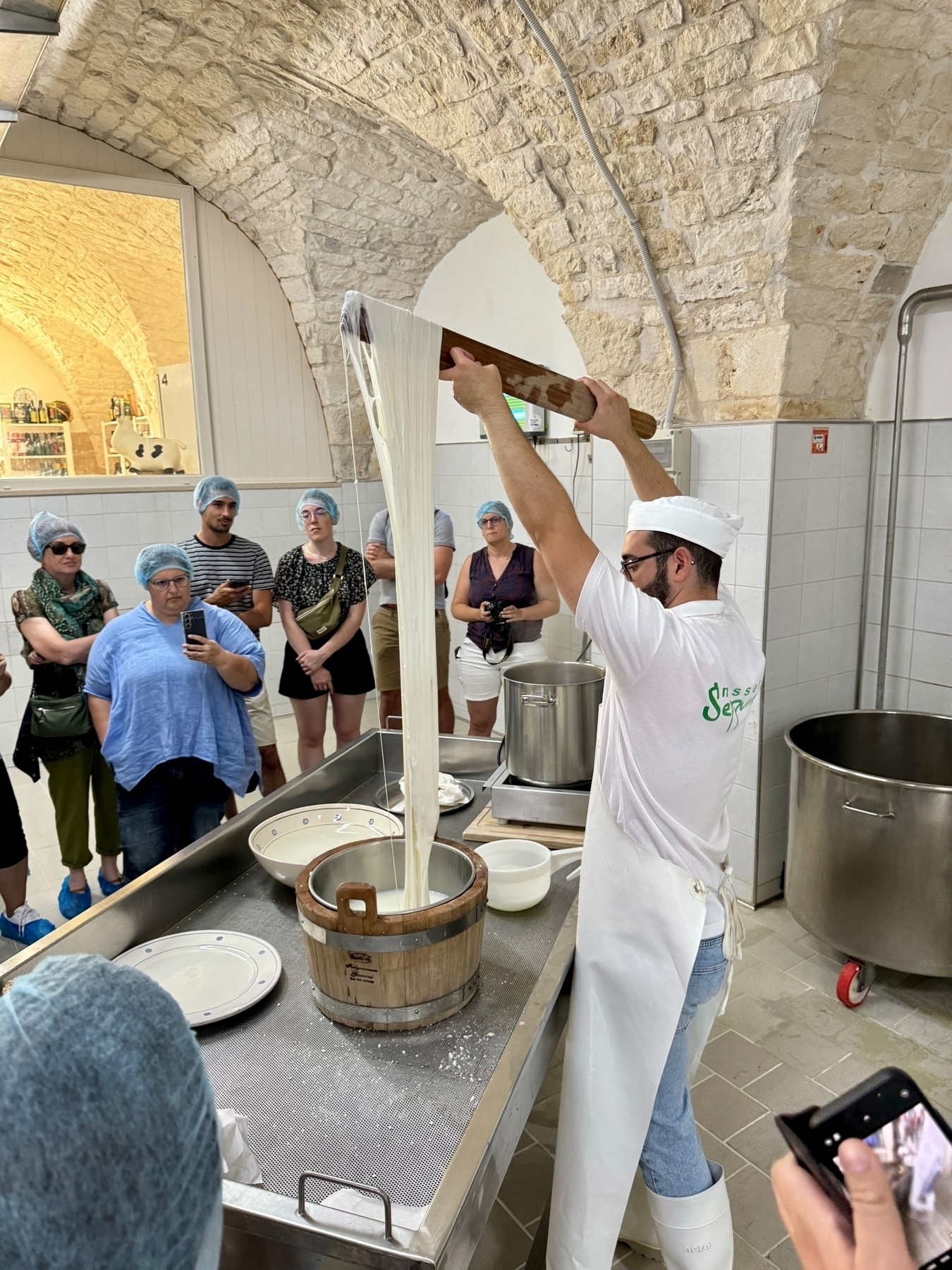
After all the stretching, he started to shape it by hand, demonstrating 4 different shapes: knots, braids, ball, and burrata.

But the highlight was being able to shape the cheese ourselves! Here’s Beth making burrata, which is stretchy mozzarella filled with stracciatella (strips of mozzarella and cream). We got to eat what we made and it was the best! So fresh and flavorful. I’ve never had burrata this good before.
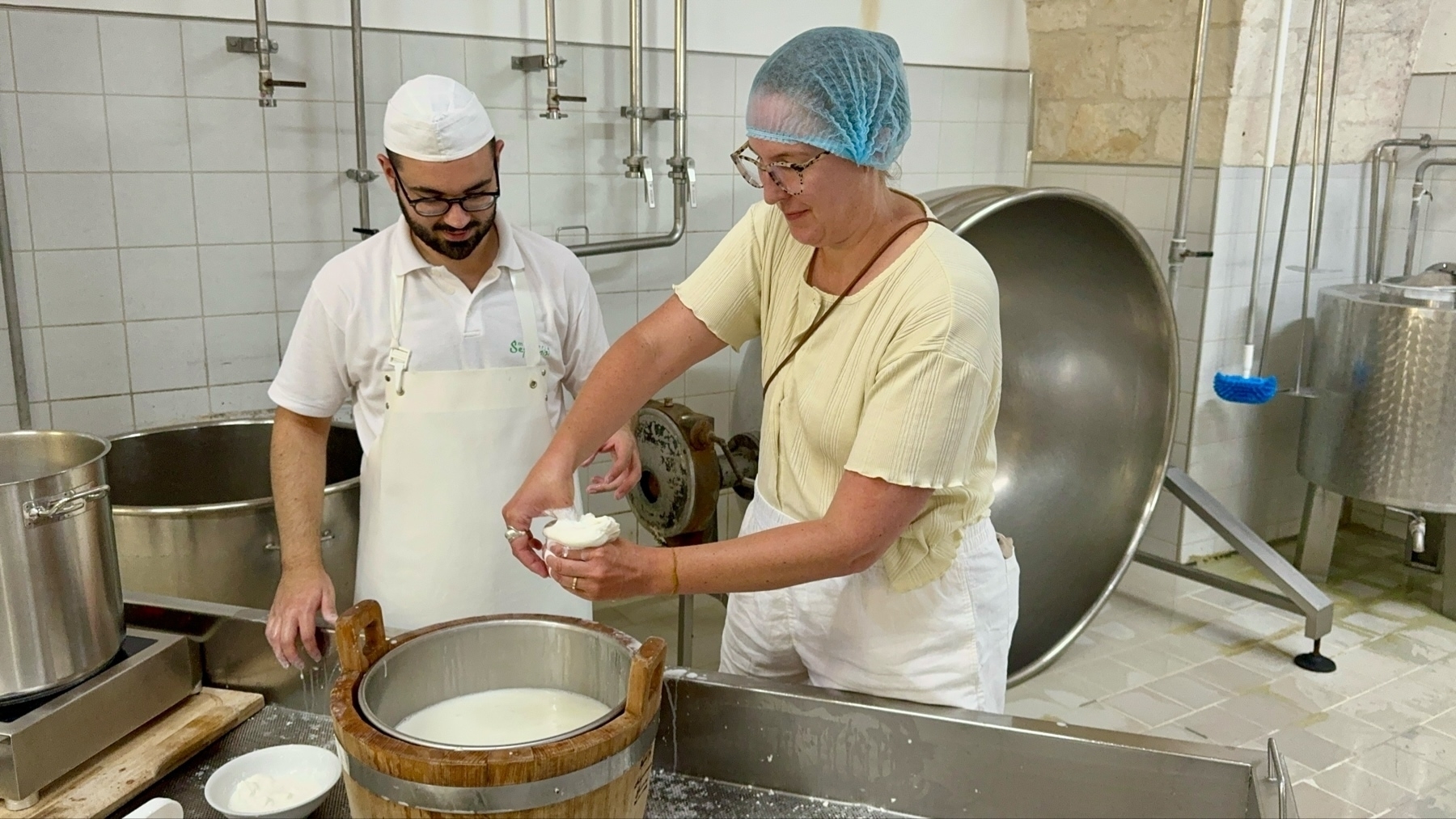
Later, we headed to a beach club, or lido as they are called in Italy, to relax and sleep off our cheese comas.
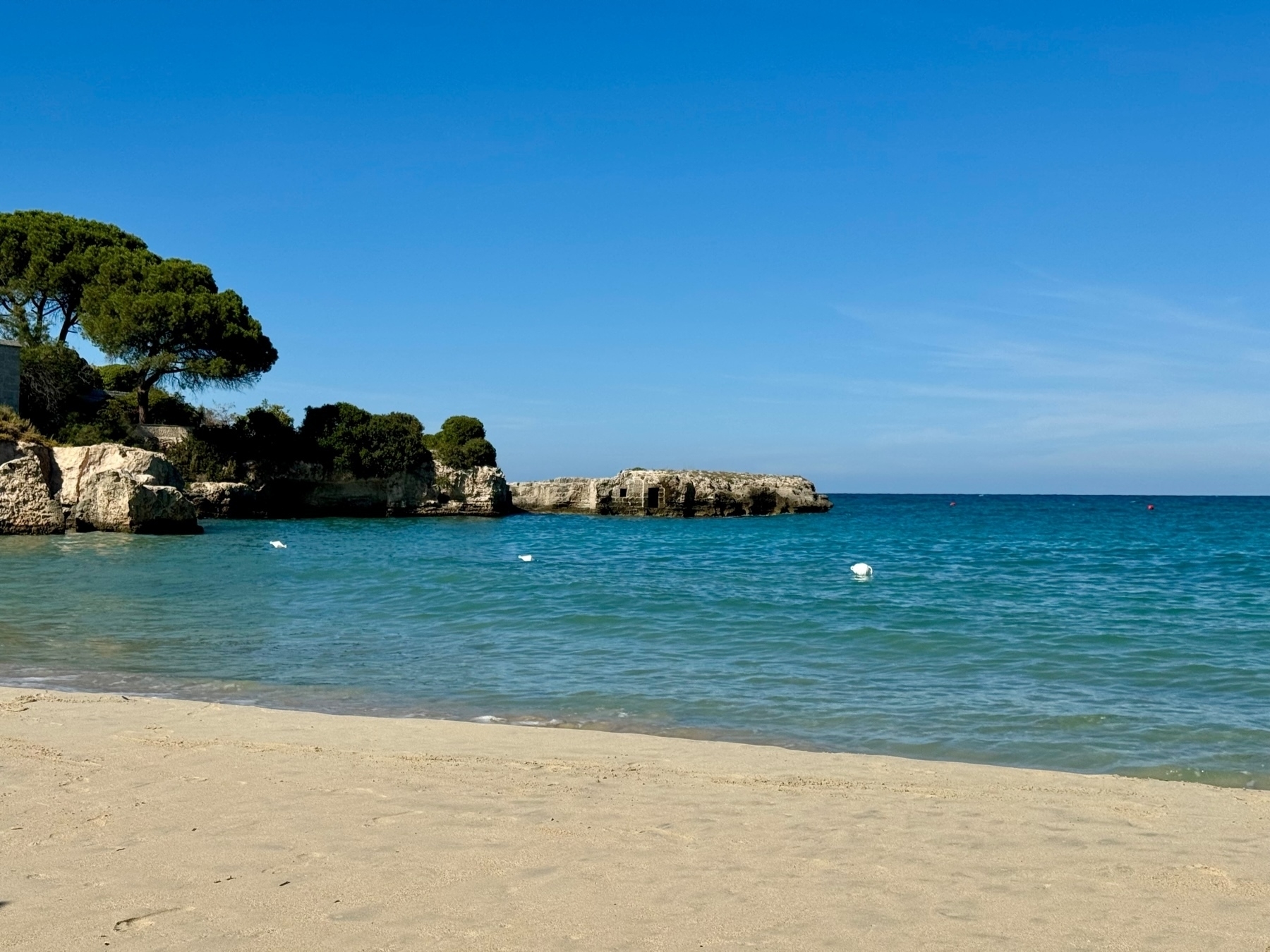
Dinner was in Capitolo which is right up the coast from the lido.

A sample of the fresh seafood they had that night. We ended up eating the lobster and scorpion fish.
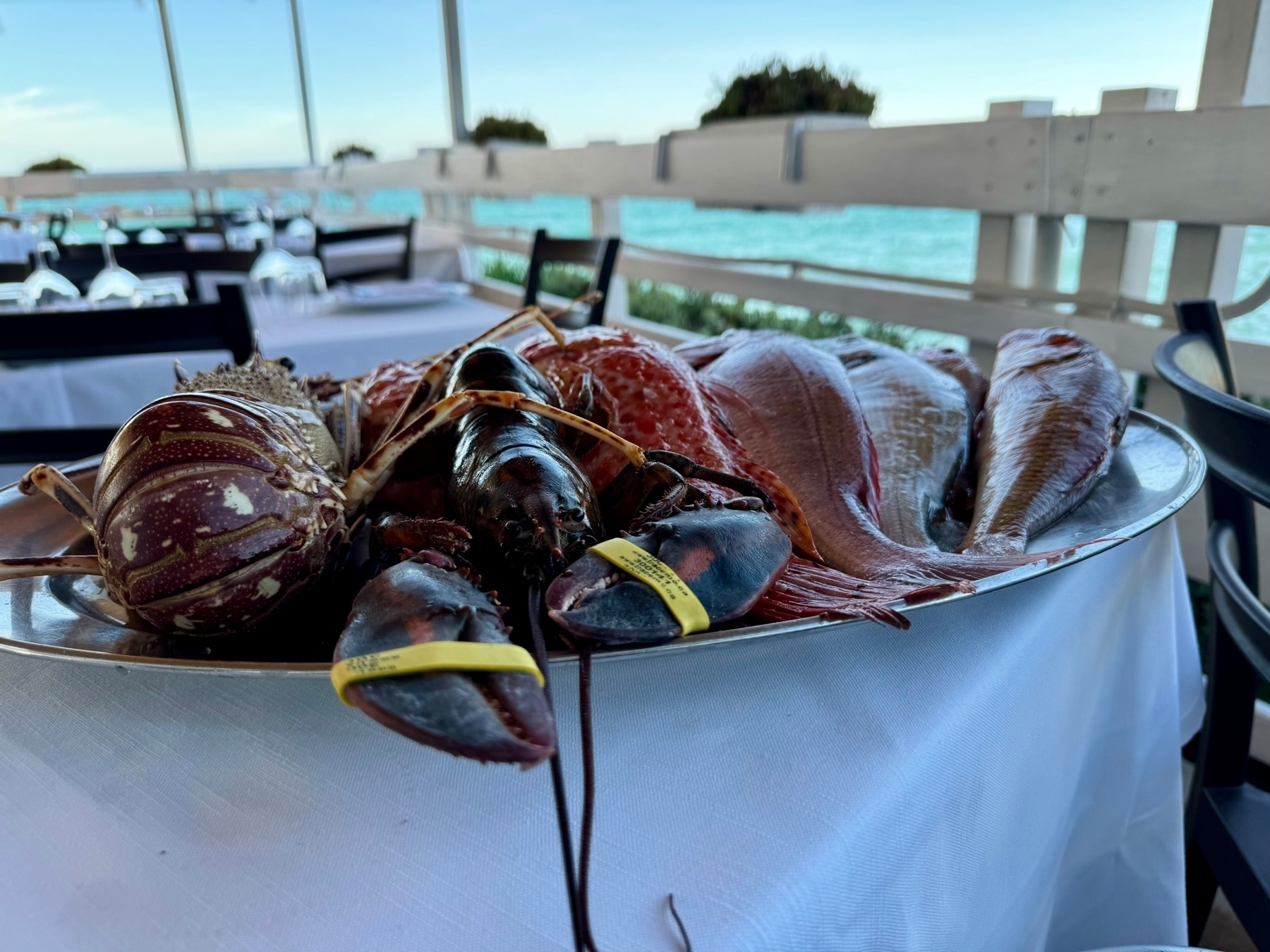
Sunset at Capitolo was very pretty!

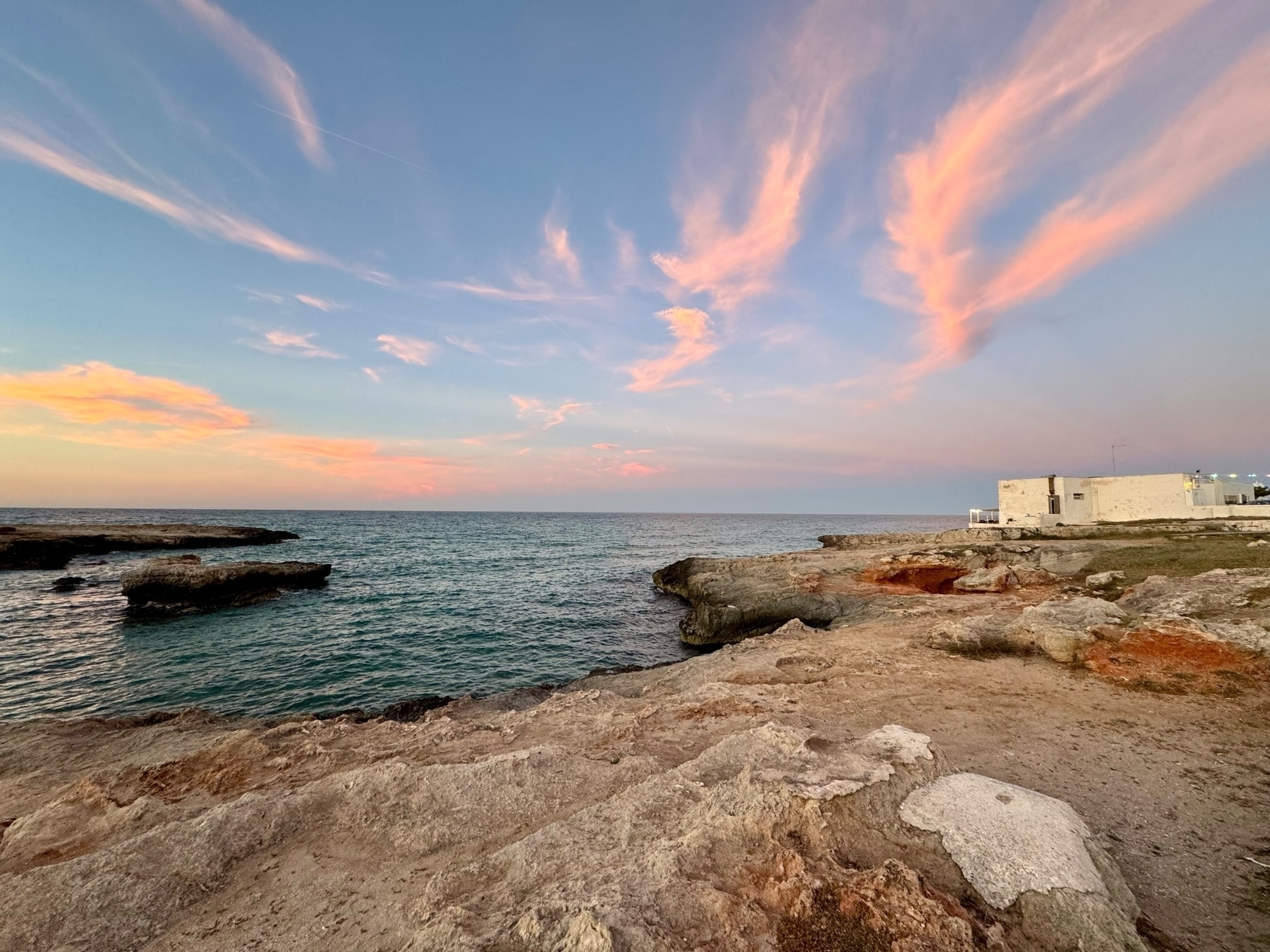
The next day we visited the seaside town of Monopoli.
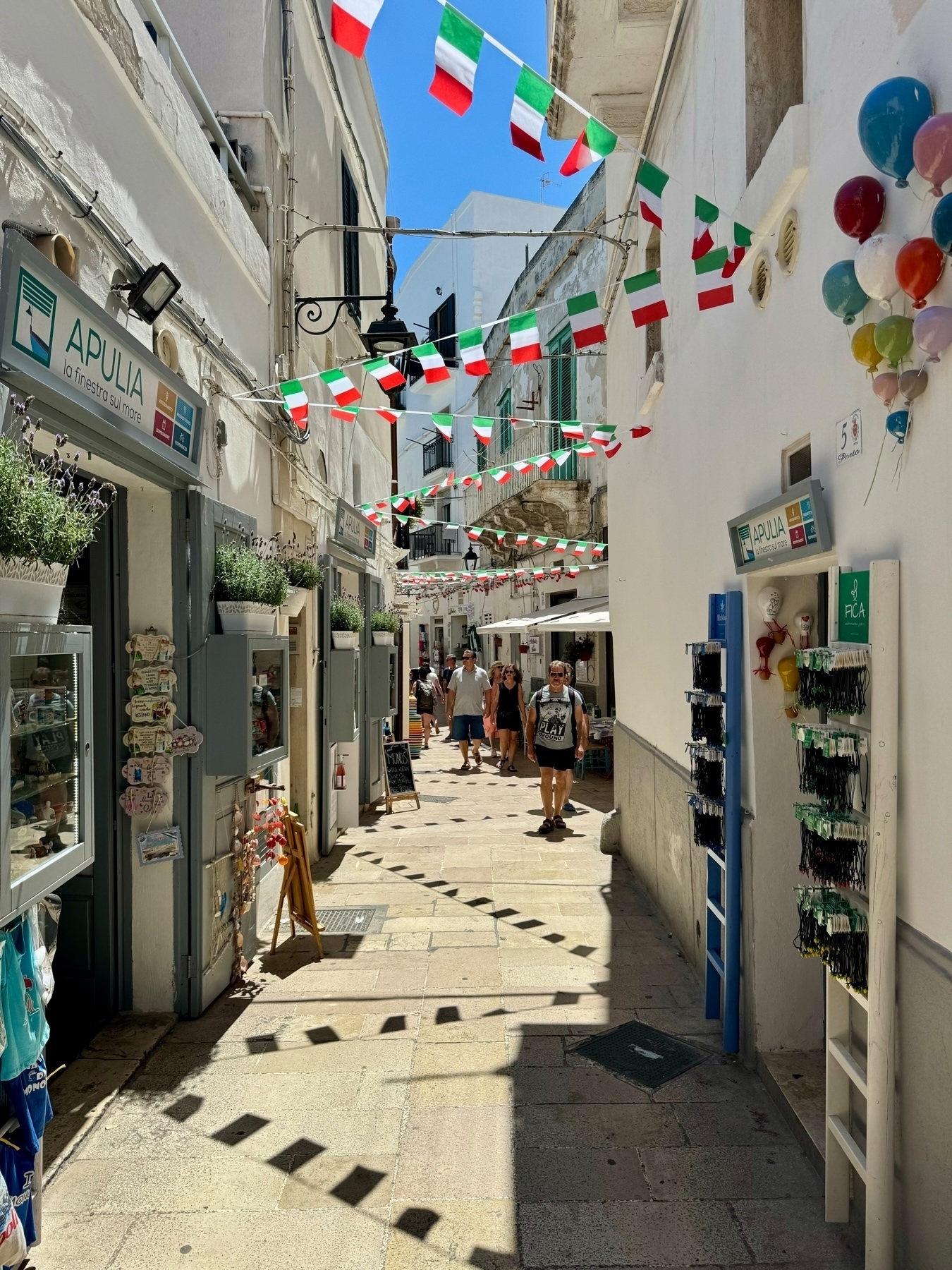
A cool portal onto the harbor.

The harbor was very beautiful.
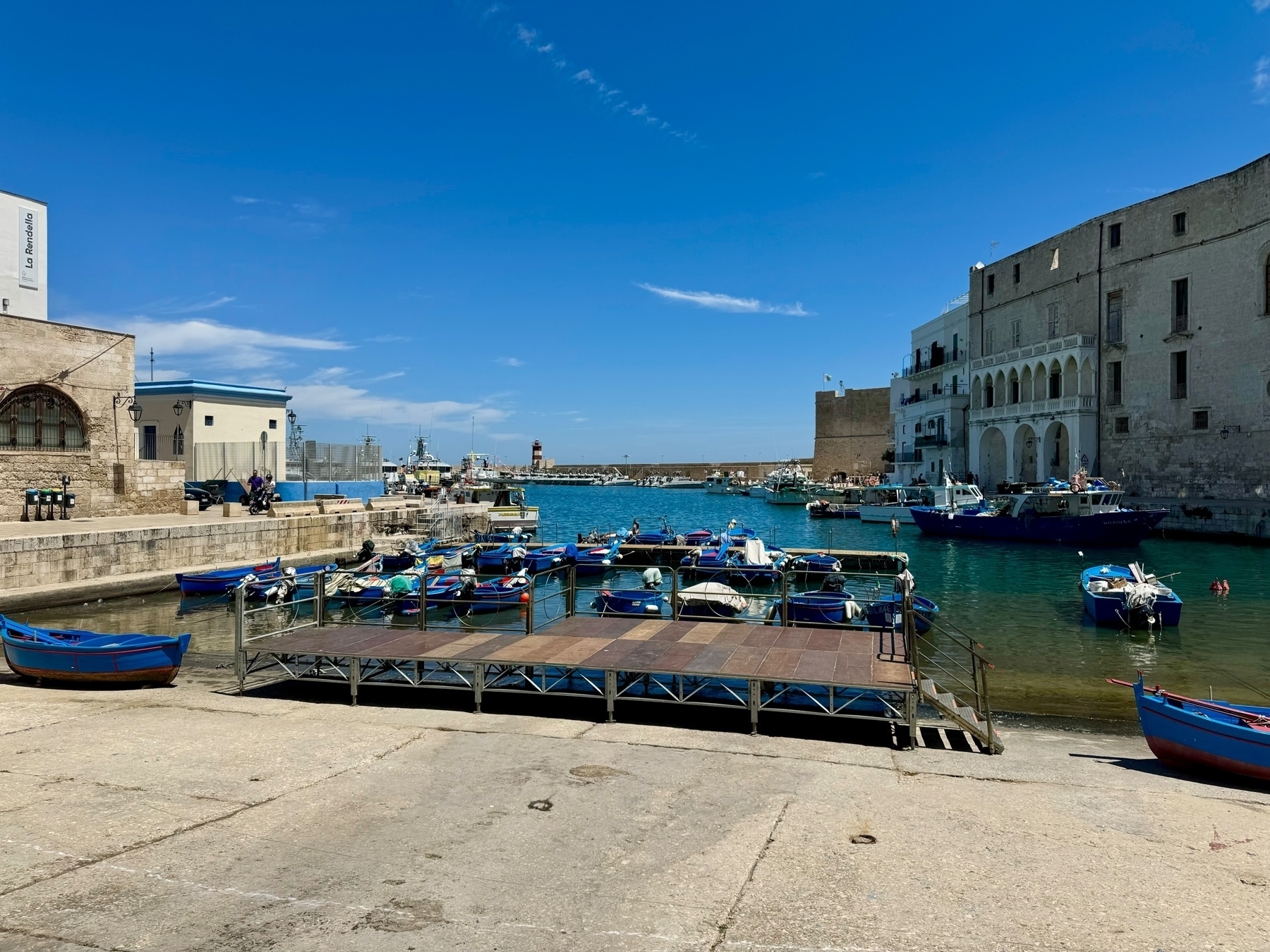
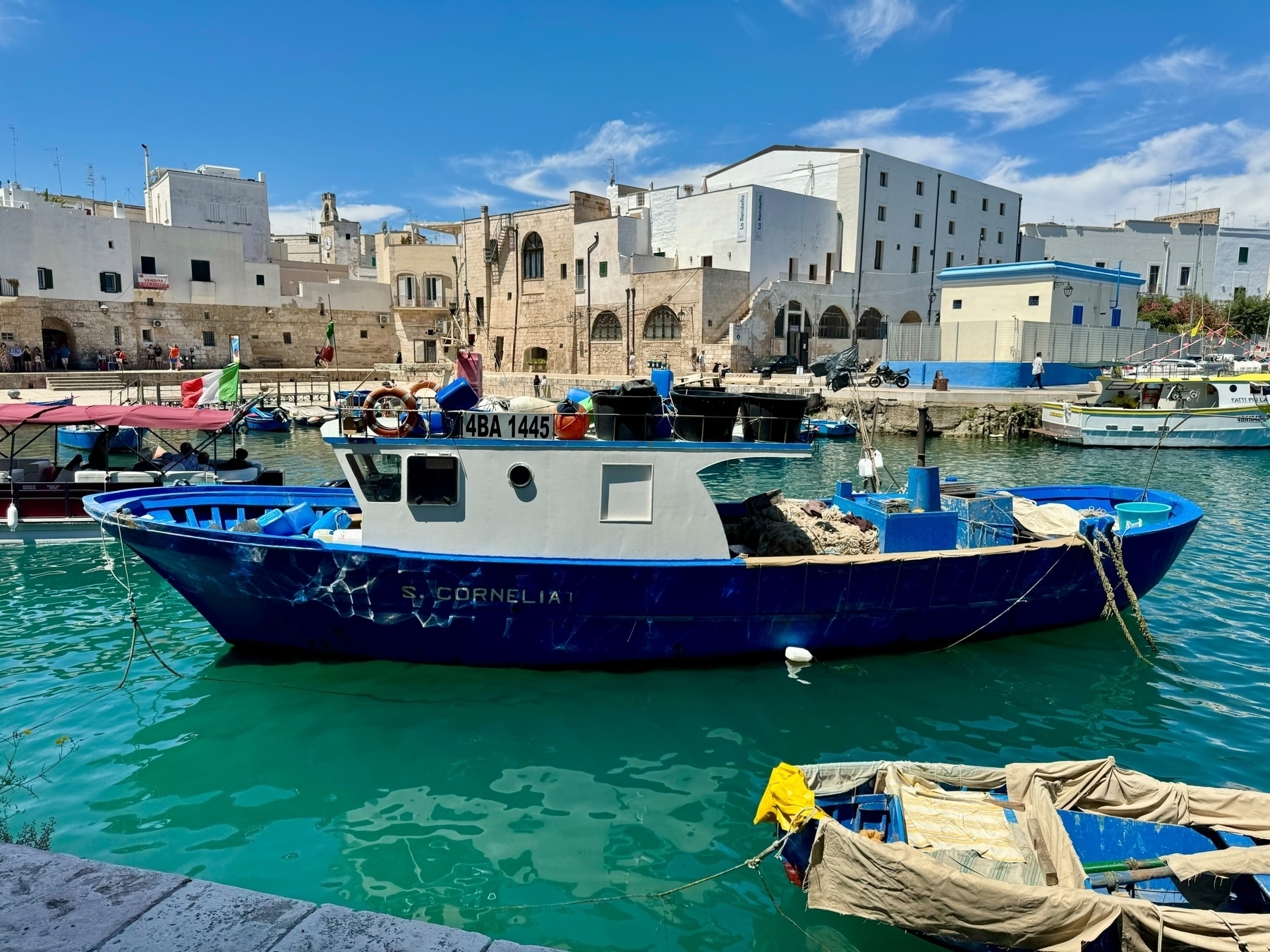
Monopoli is still an active port, yet remains very scenic.
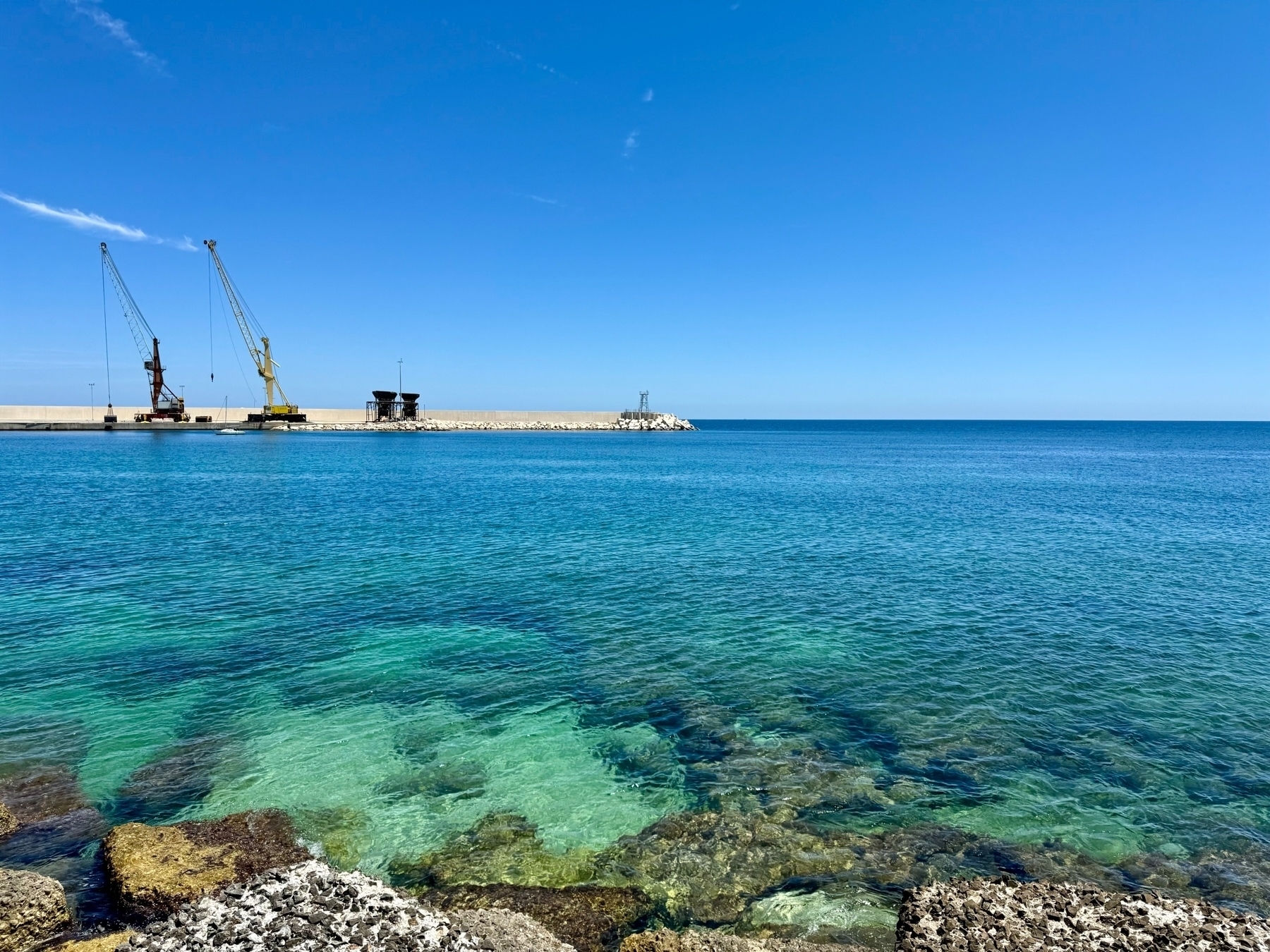
The streets of Monopoli are beautiful as well. I love the white render buildings and the white stone streets.

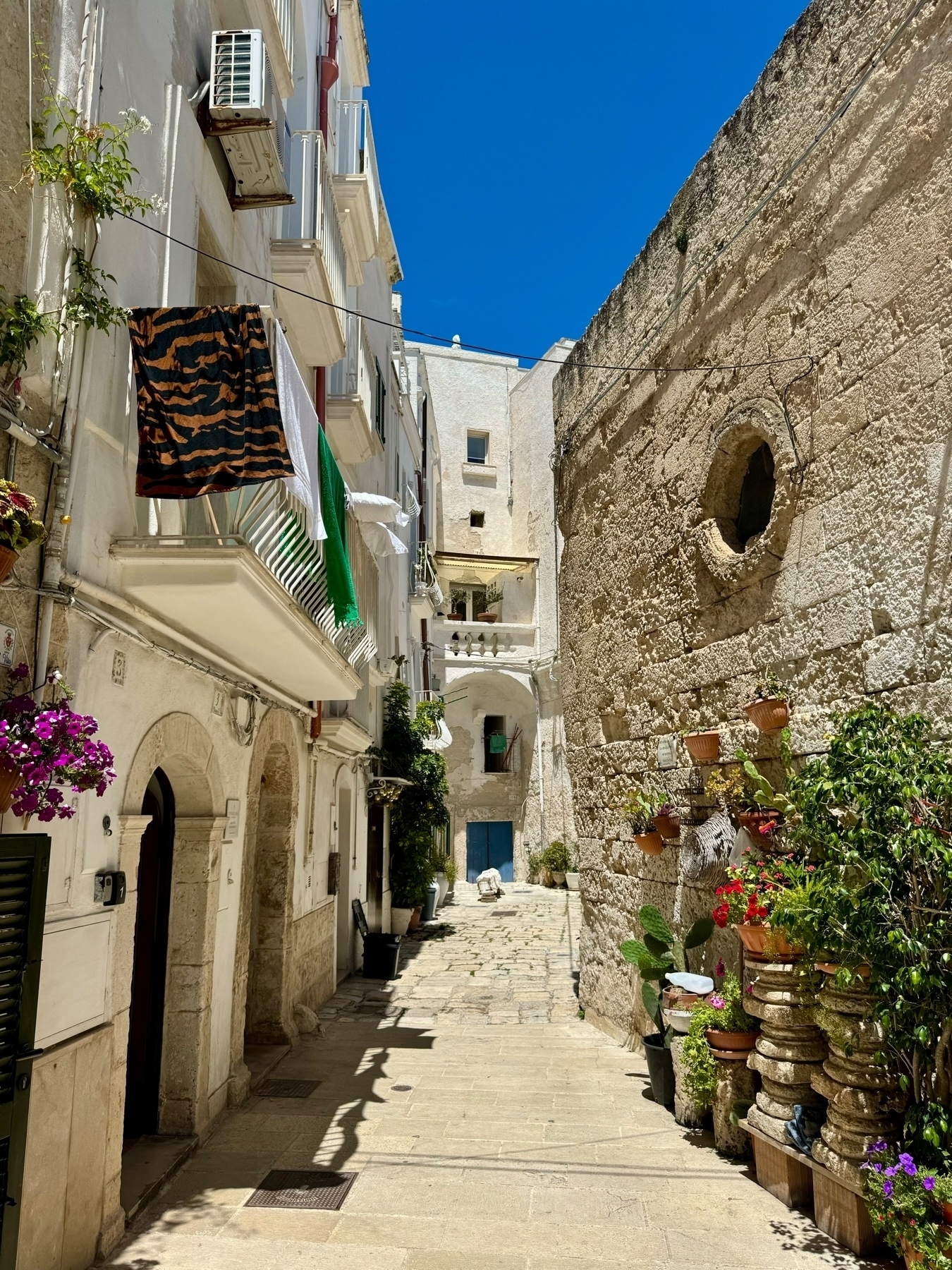
Someone taking a selfie in this square.

Ok, a quick break to show the Italian way to make caffè Lecce, as we learned from our guide on the bike tour. The drink is named after the city of Lecce and is served as espresso with a side of almond syrup and ice.
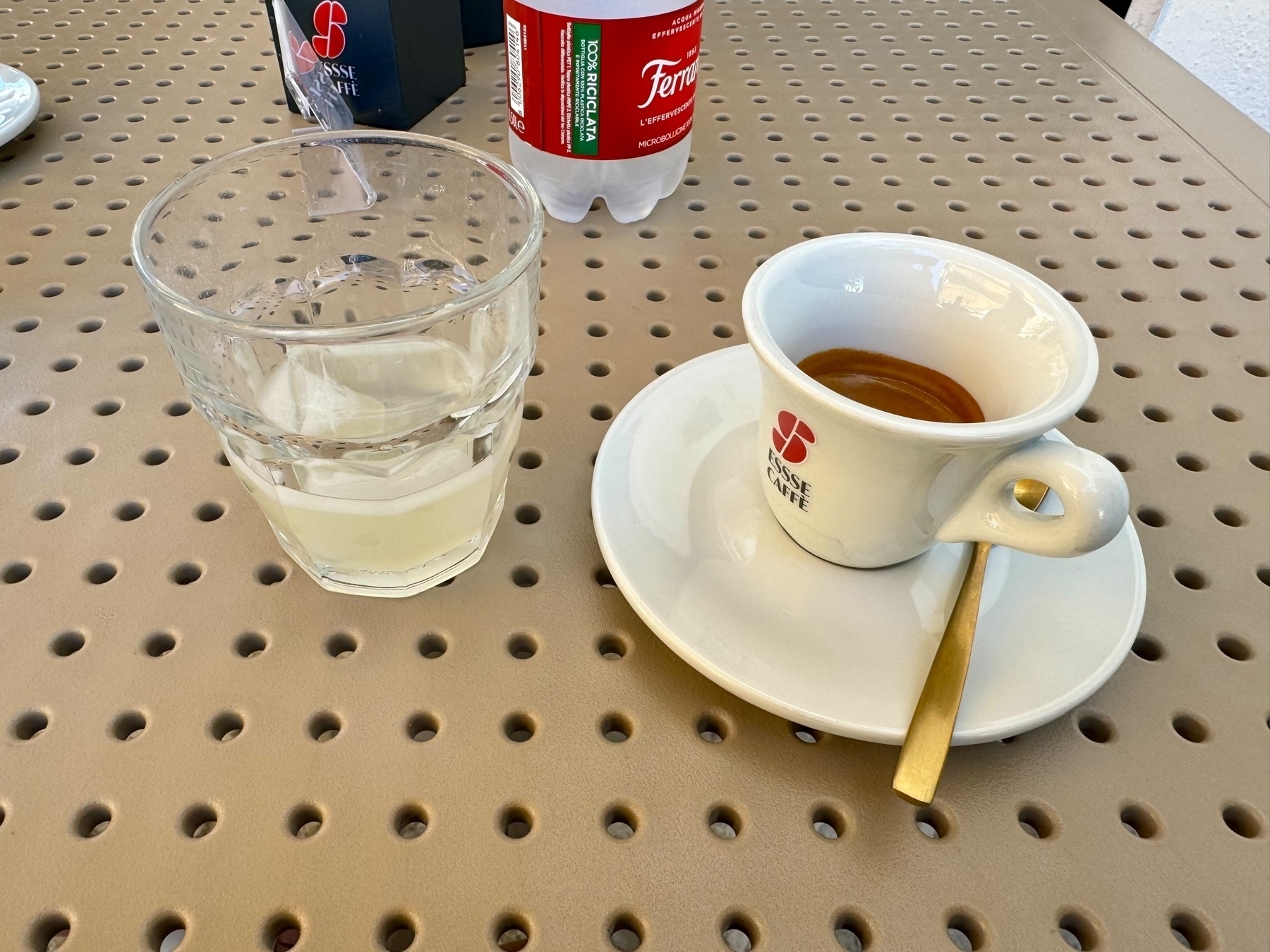
You pour the espresso into the glass, letting the cup rest upside down to make sure every drop of espresso makes it in.
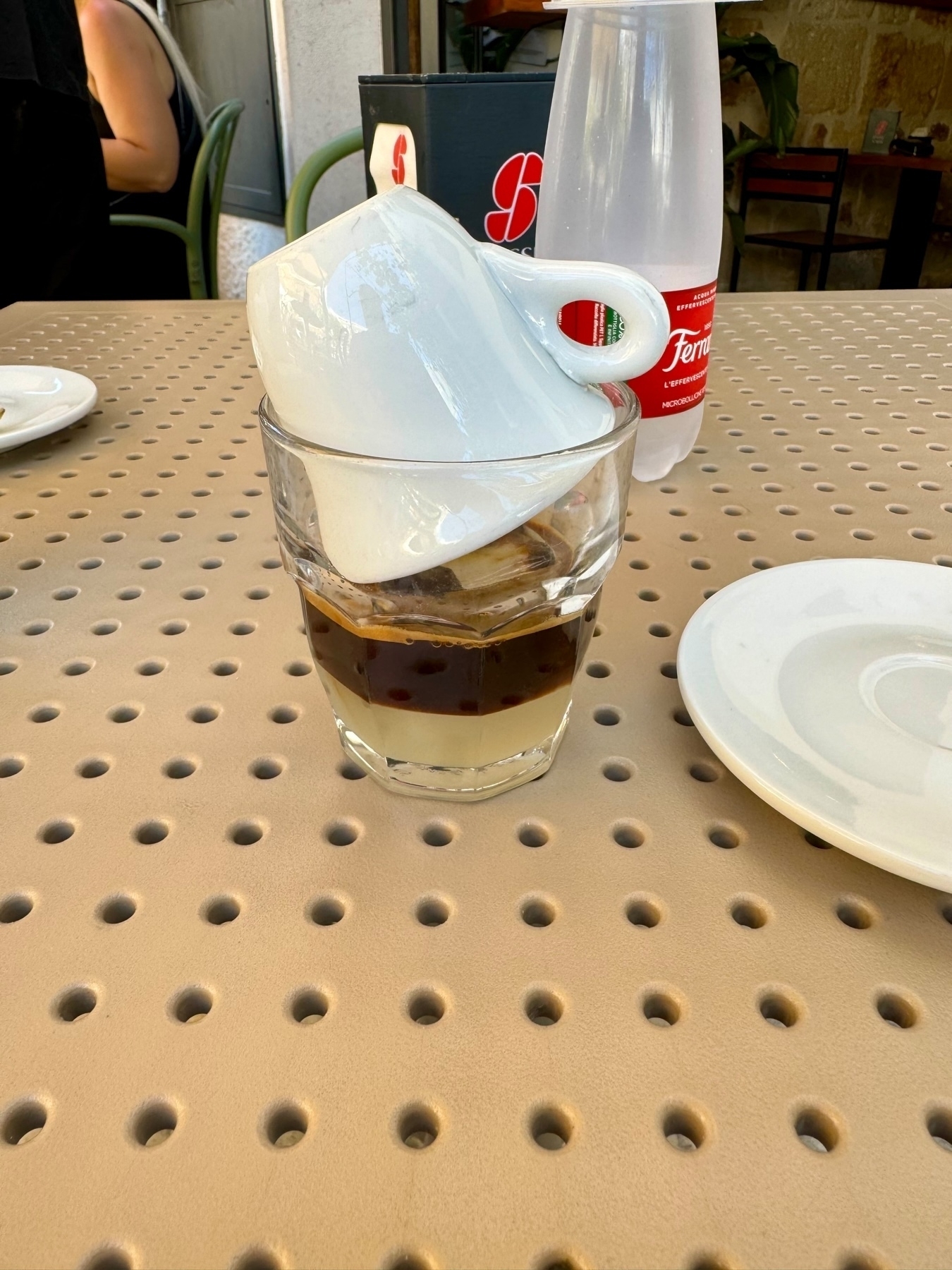
Then you stir it together and enjoy. I love this drink. I’ll have to try and find the right kind of almond syrup in the US so I can make this at home.
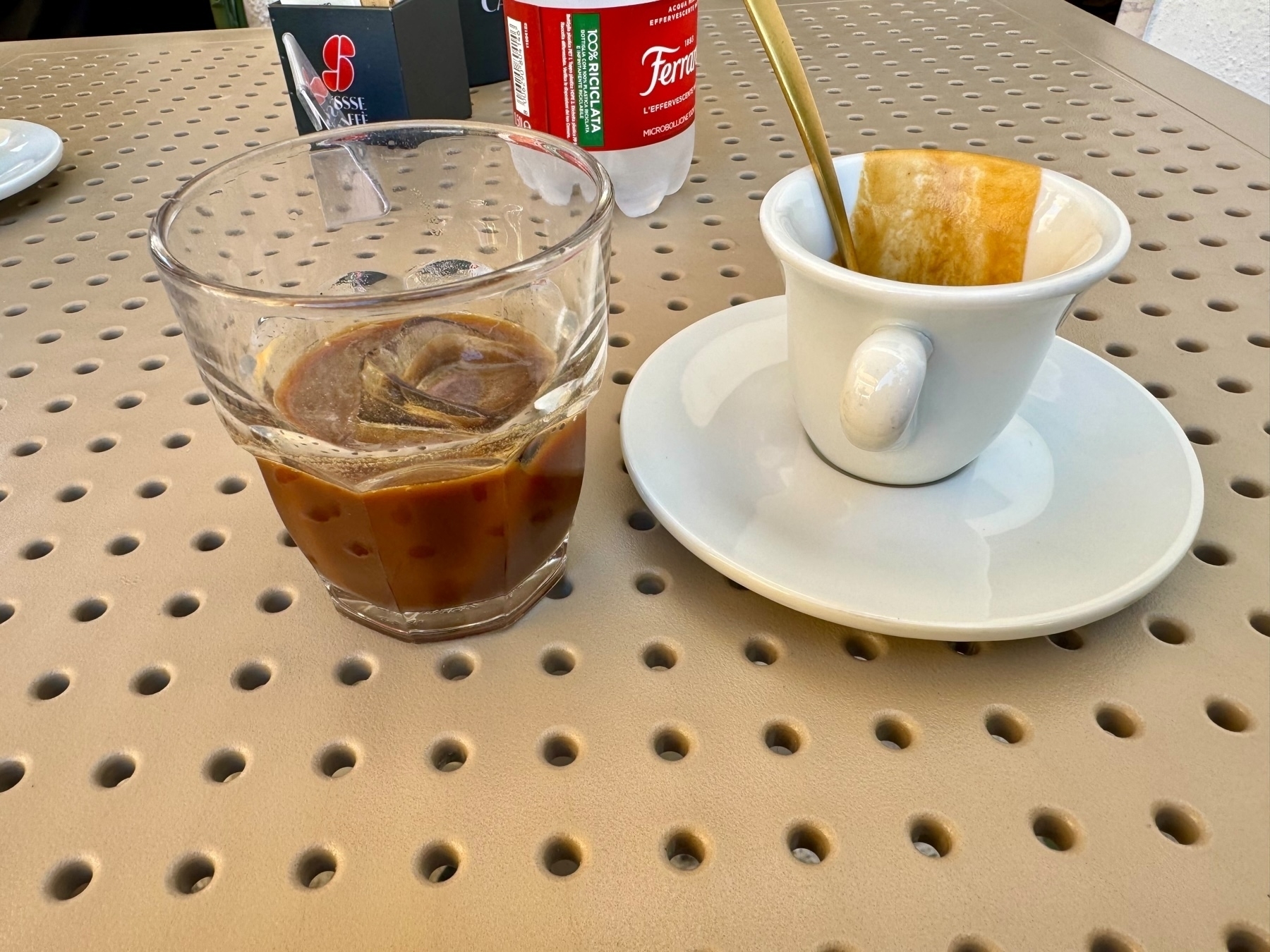
After Monopoli we headed to a Polignano a Mare, which is another seaside town famous for its beach and cliffs with sea caves. Here we had a boat tour, which was a great way to see the coast.
Beth gets the photo credit for all the pics from the boat.
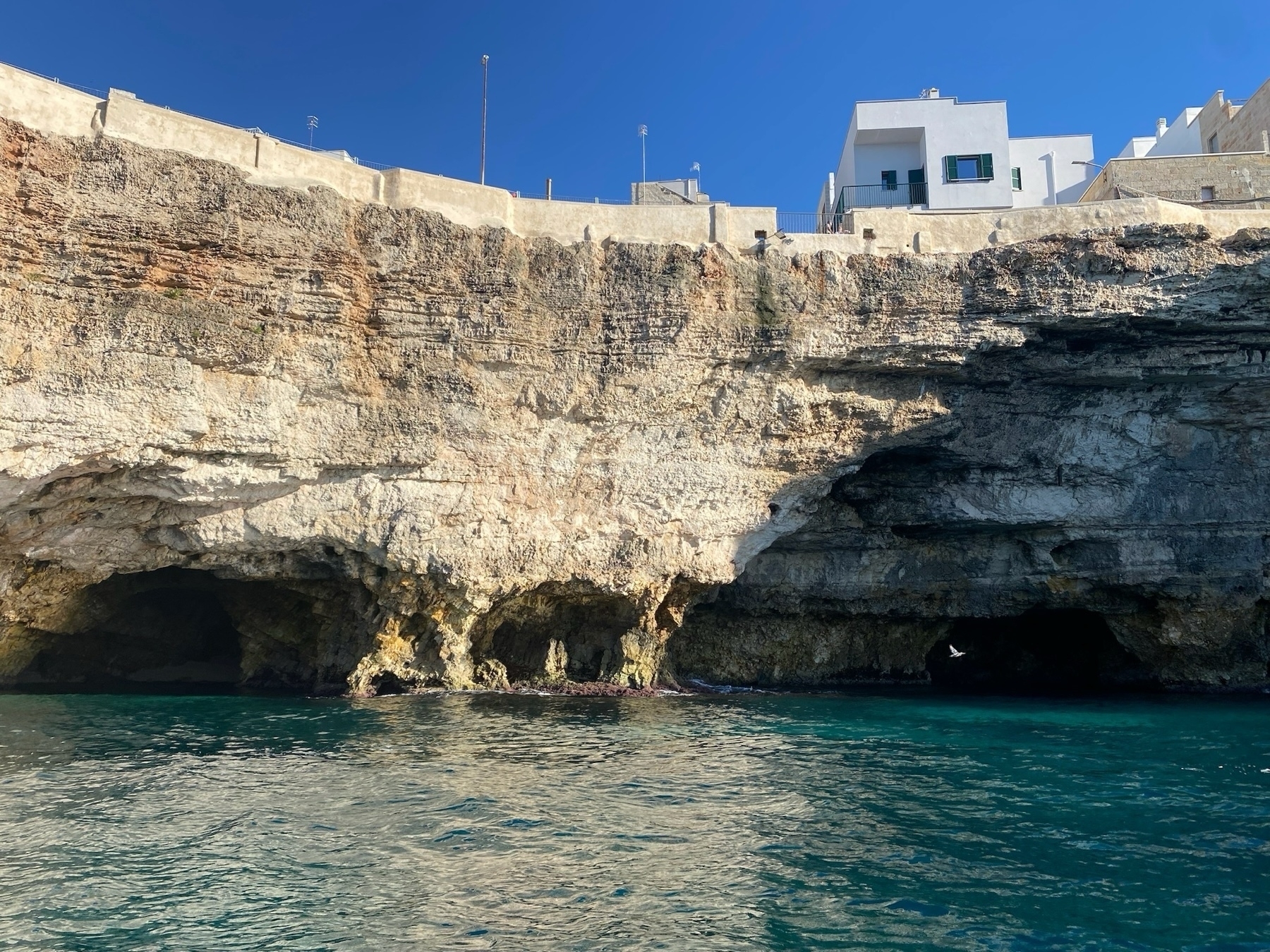
Here, the very famous beach.
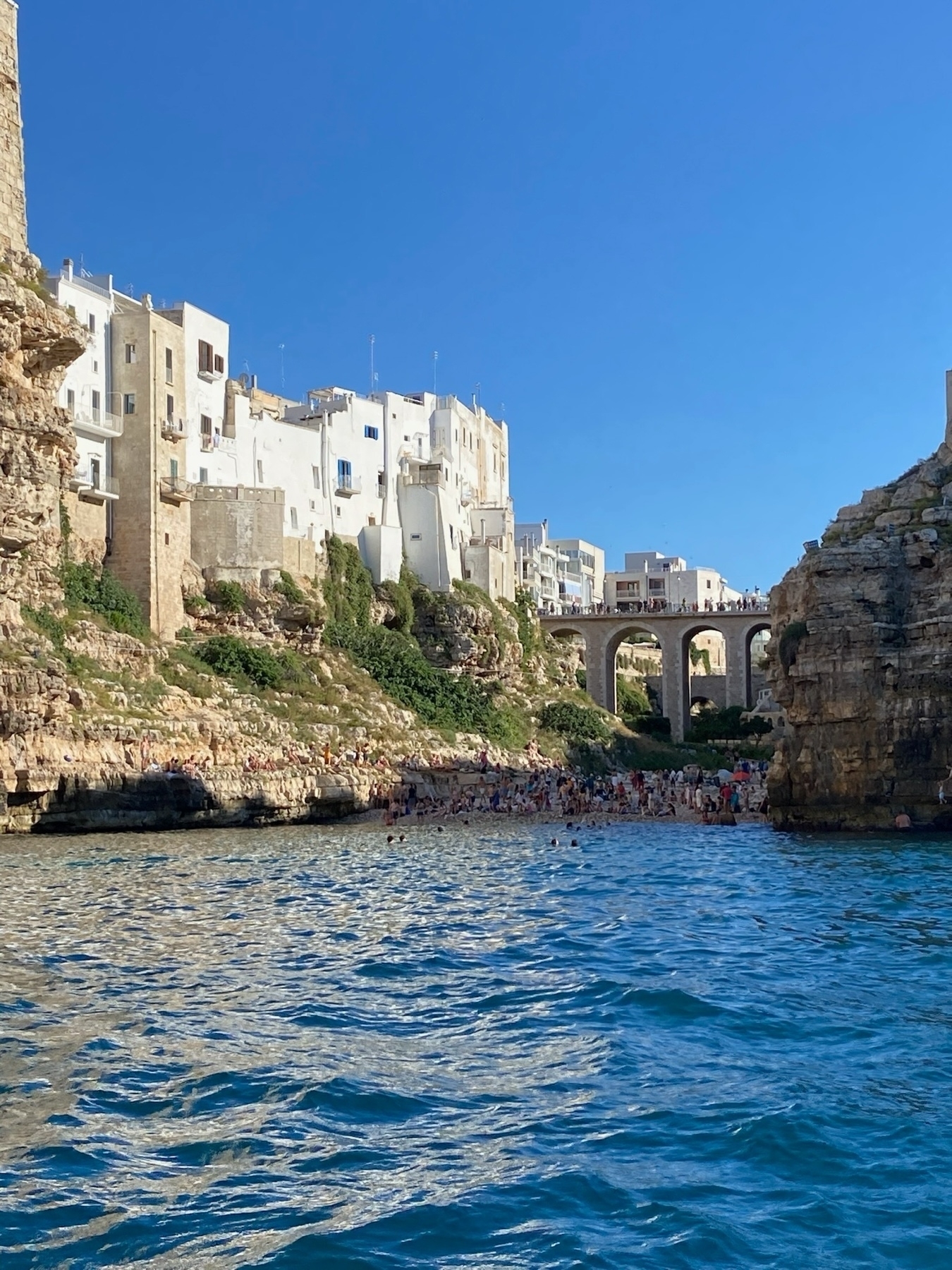
Our guide even took the boat into a few of the larger caves, to our surprise! The water inside was beautiful
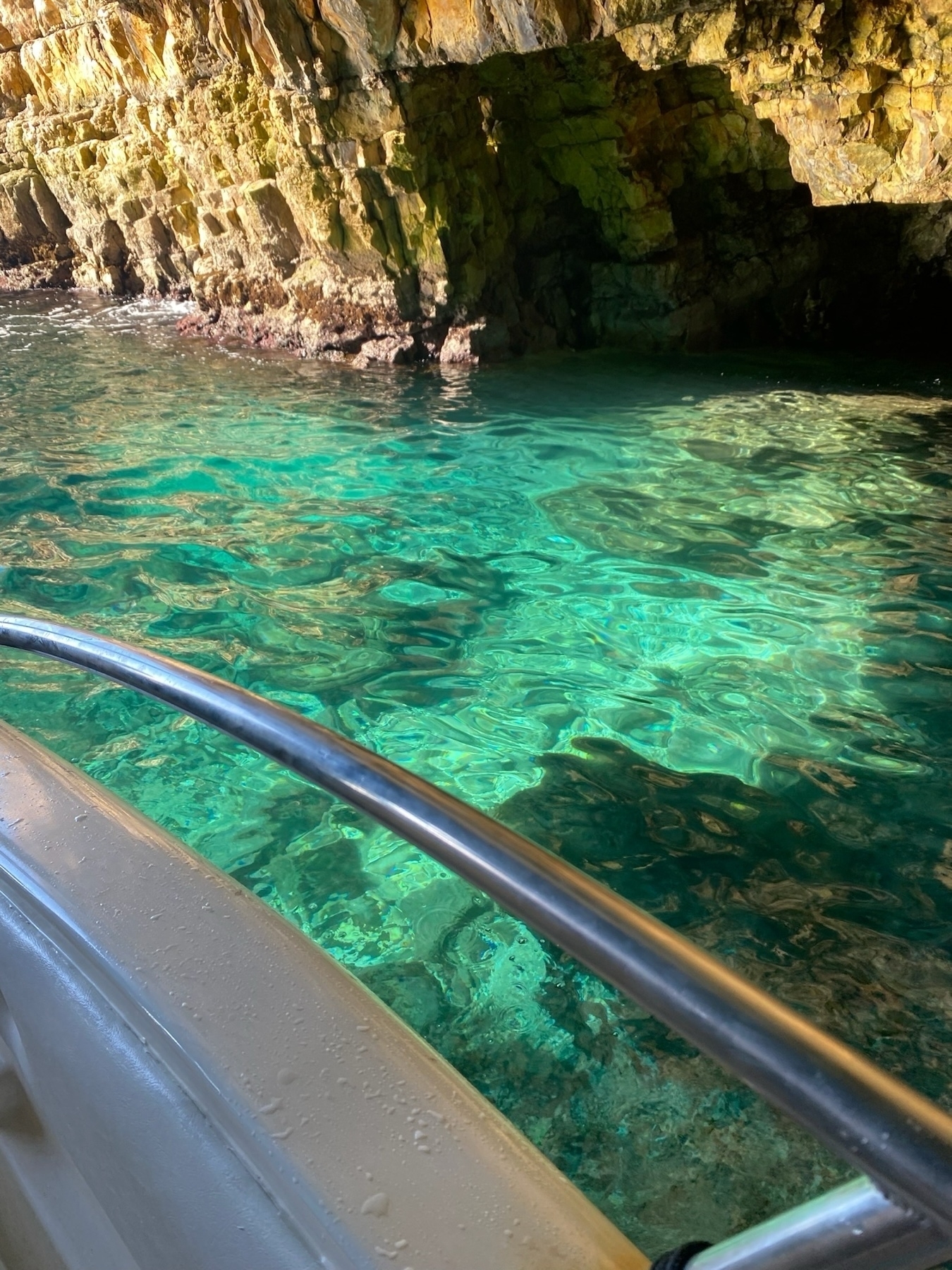
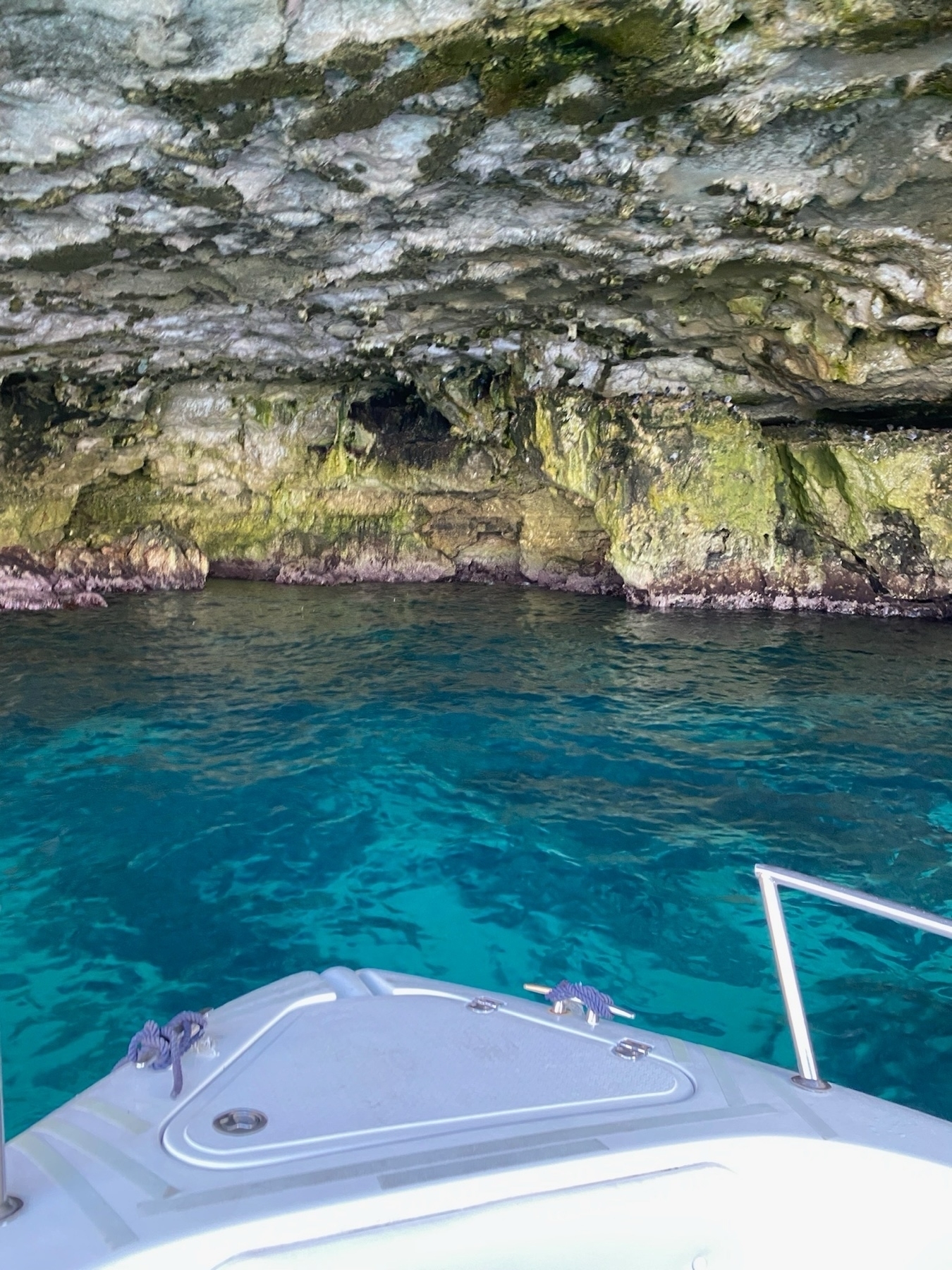
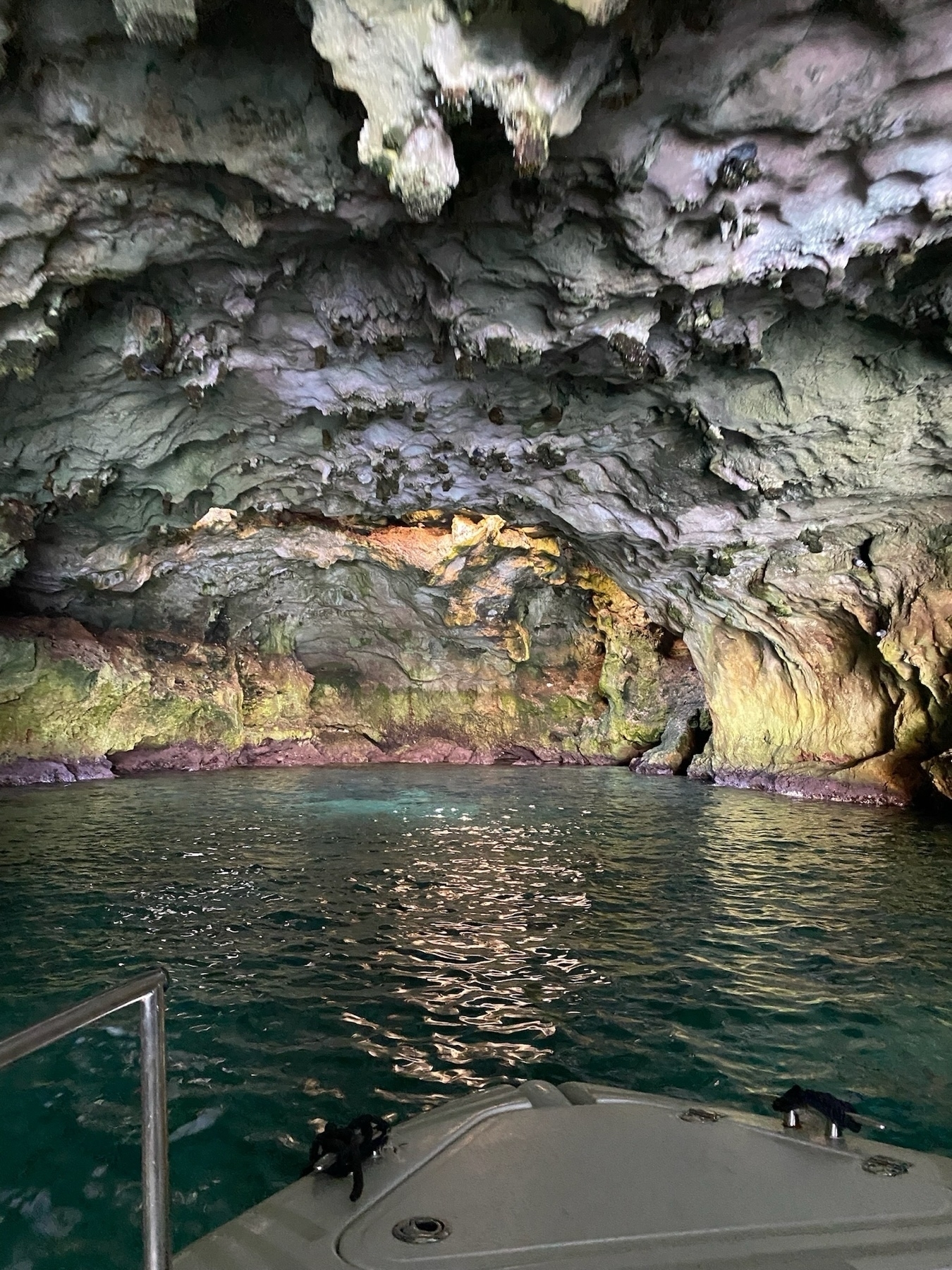
Inside this cave, you can see the pathway up above, which is actually a very high end restaurant built into the upper part of the cave with views out onto the sea.
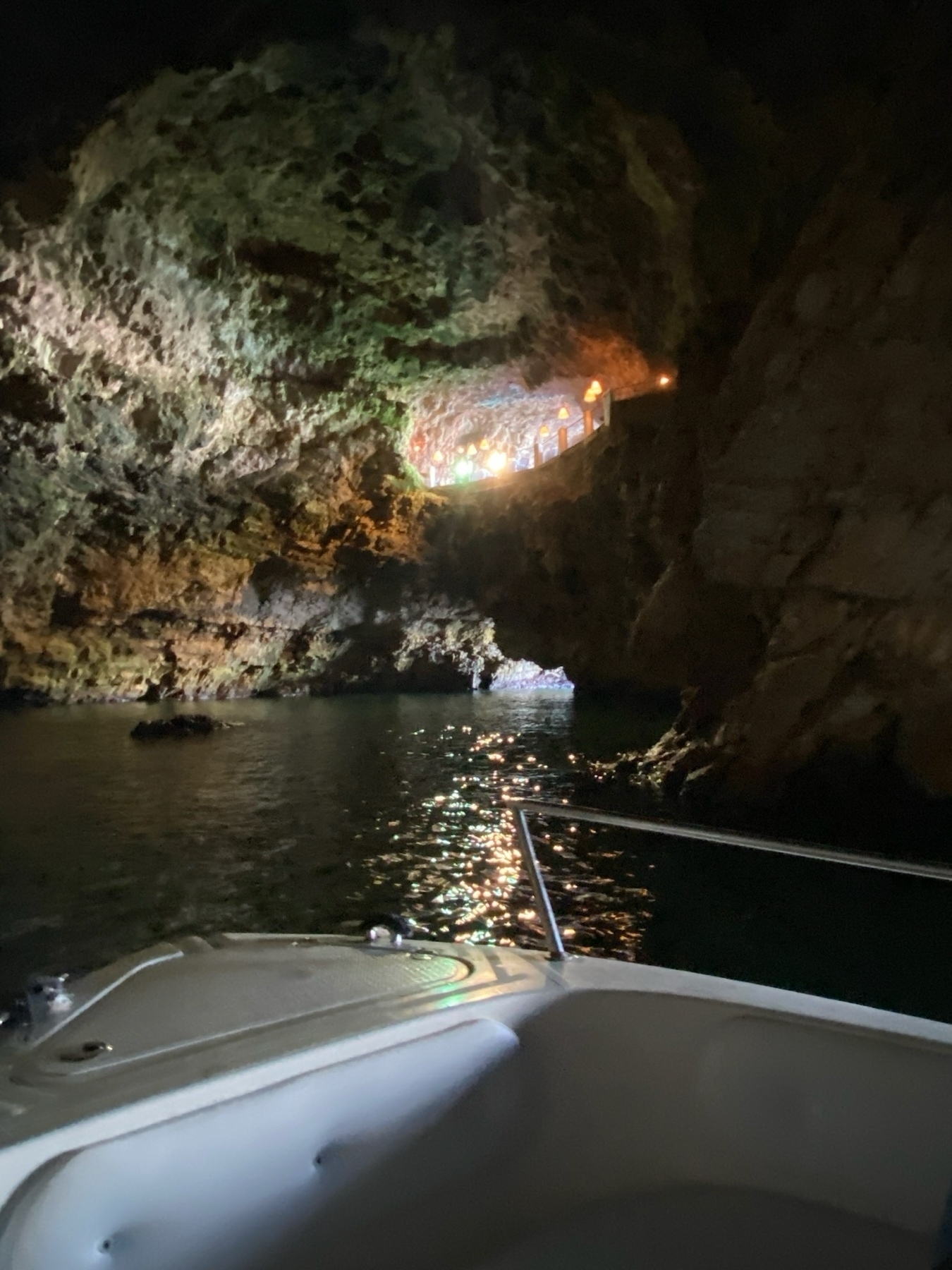
The streets of Polignano a Mare at night, showing some lights celebrating the song “Nel blu, dipinto di blu” by Domenico Modugno who was born in Polignano. There’s even a statue of him that we saw from the boat. However, our guide told us that the statue and celebration of Domenico is just for the tourists and the people from Polignano don’t like the signer because he claimed to be from Sicily rather than his true birthplace of Polignano a Mare.

More night views of Polignano.
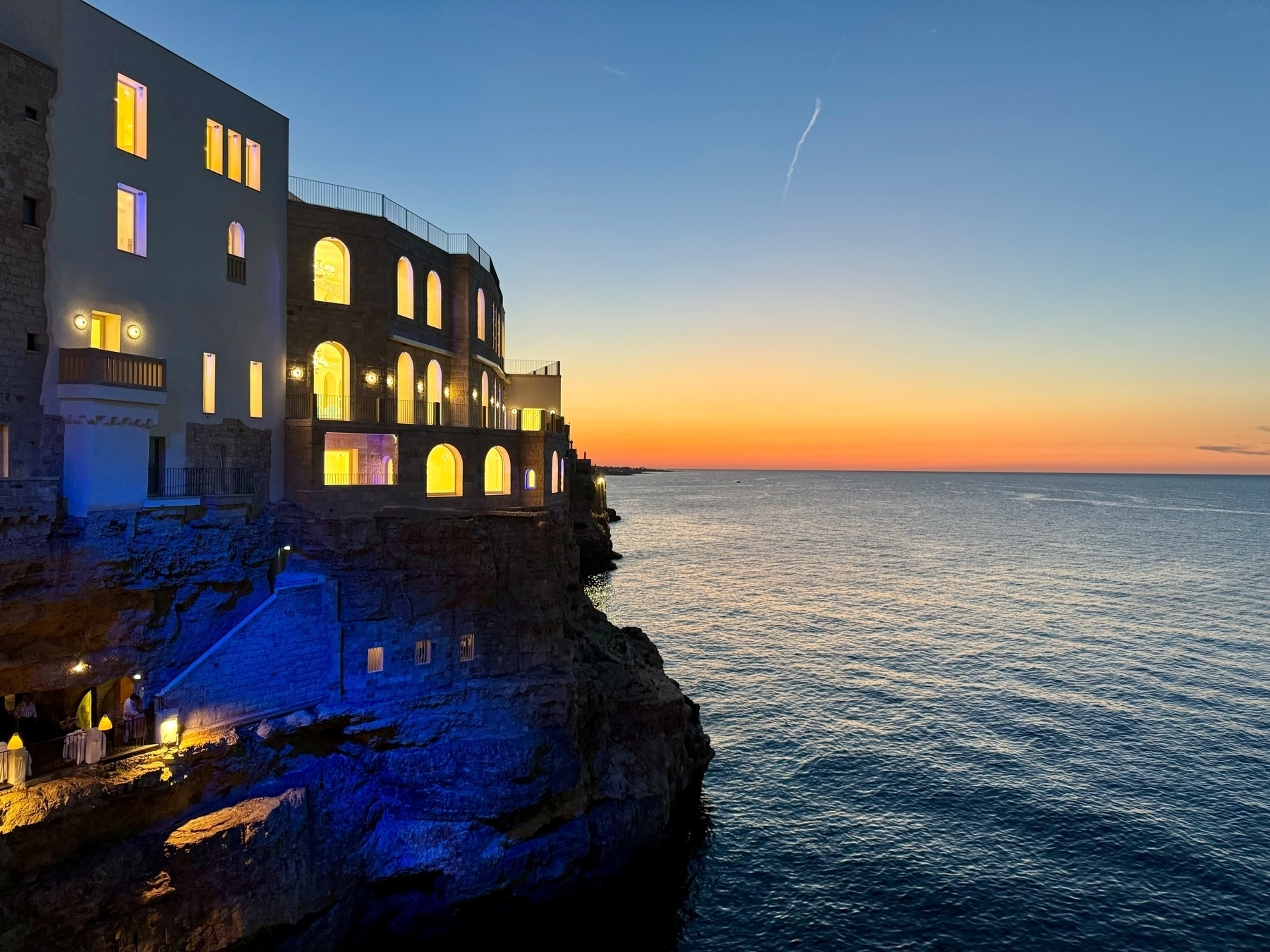
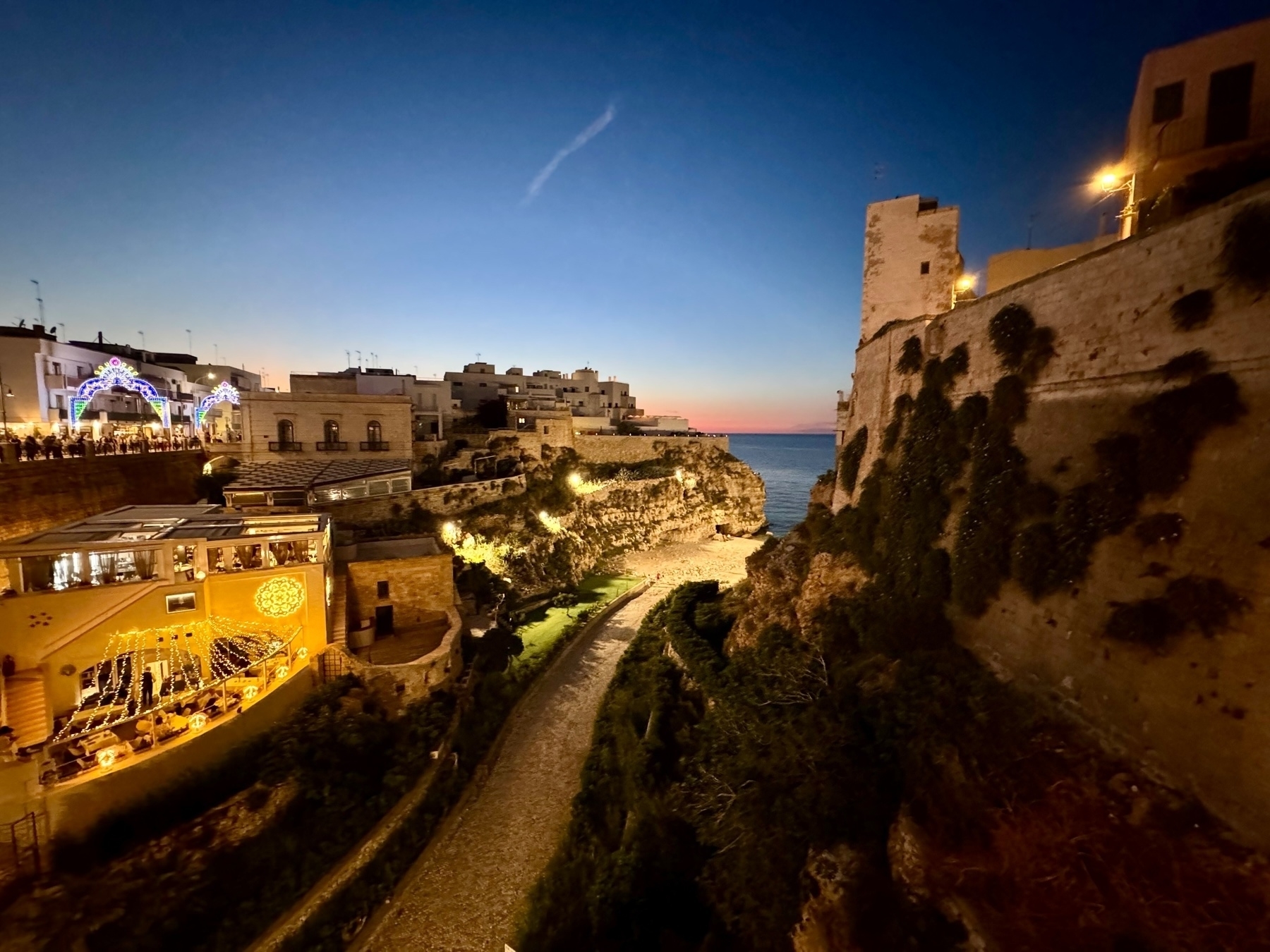
Our next day we headed for a cheese tasting at Baby Dicecca, which is located inside a forest preserve. We were lucky enough to meet the cheese maker himself, Vito Dicecca, who was very nice. He stopped by our table a few times to chat with us and see what we thought of his cheese. We tasted a lot of cheese, and they were all great, but his signature blue cheese served as a cake topped with cherry was the star!
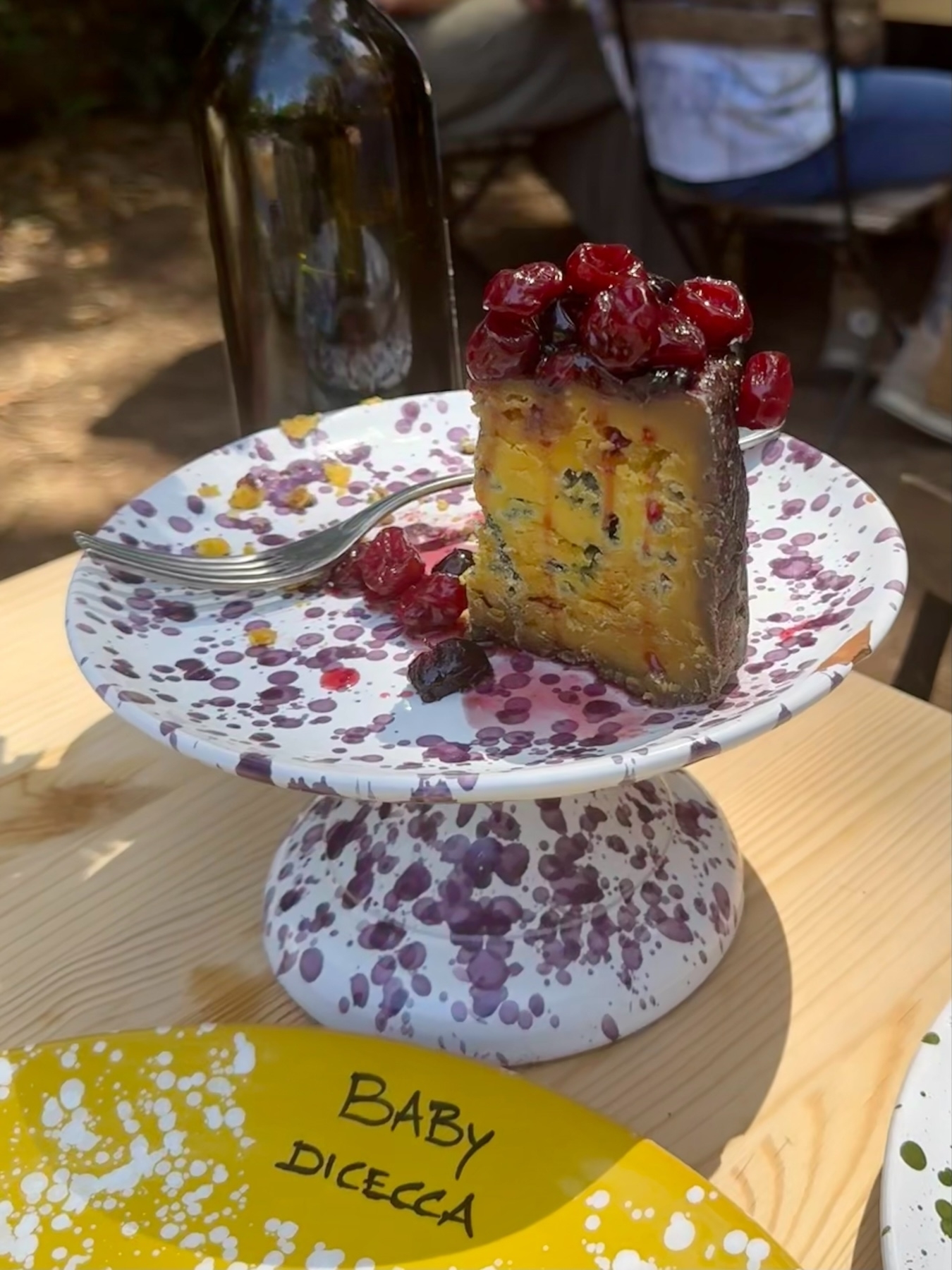
Later in the afternoon, we fought off our cheese comas and headed to Matera for a tour of the city.
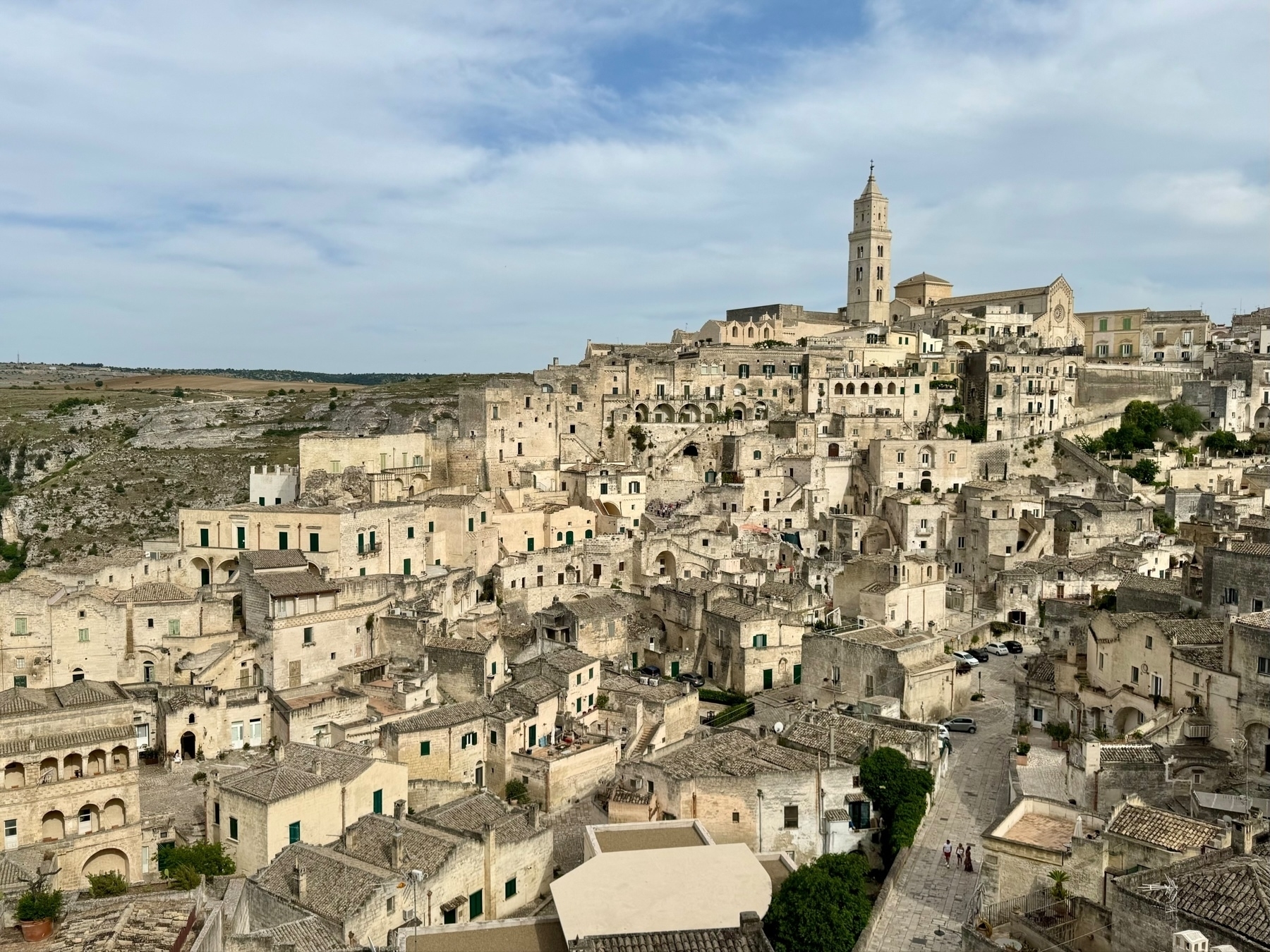
We learned the history of Matera, which is vast. The civilization originally started as cave dwellings carved into the rock cliffs along the stream. Over time, people built on top of the caves, adding stonework to create buildings. However, every building is at least partially carved into the rock. Many buildings have vast caves below them. At least, if you were well off you could afford to have a building above ground. Many of the poorer residents lived entirely in caves with no access to fresh air.
What was shocking was to learn how by the 1950s the city was in very rough shape. There was no running water or electricity. All of the residents were living life as if it was still the 1800s. Malaria and other diseases ran rampant as it was impossible to maintain modern hygiene.
The government eventually stepped in and evicted everyone from the historic part of the city, into new public houses that was constructed adjacent to the historic buildings. So, from the 1950s until about 1990, the historic buildings sat vacant. Our tour guide told us that at one point, the government considered just demolishing the historic city, but abandoned the idea when they determined the amount of dynamite needed would be too costly
So, the city sat vacant until the 1990s. At this point, the government decided to try and create a tourist destination. Modern utilities were installed and buildings were rented out to businesses. But, things didn’t really catch on until about 10 years ago.
Now, the city is in full tourist mode, with Michelin star restaurants and 5 star hotels.
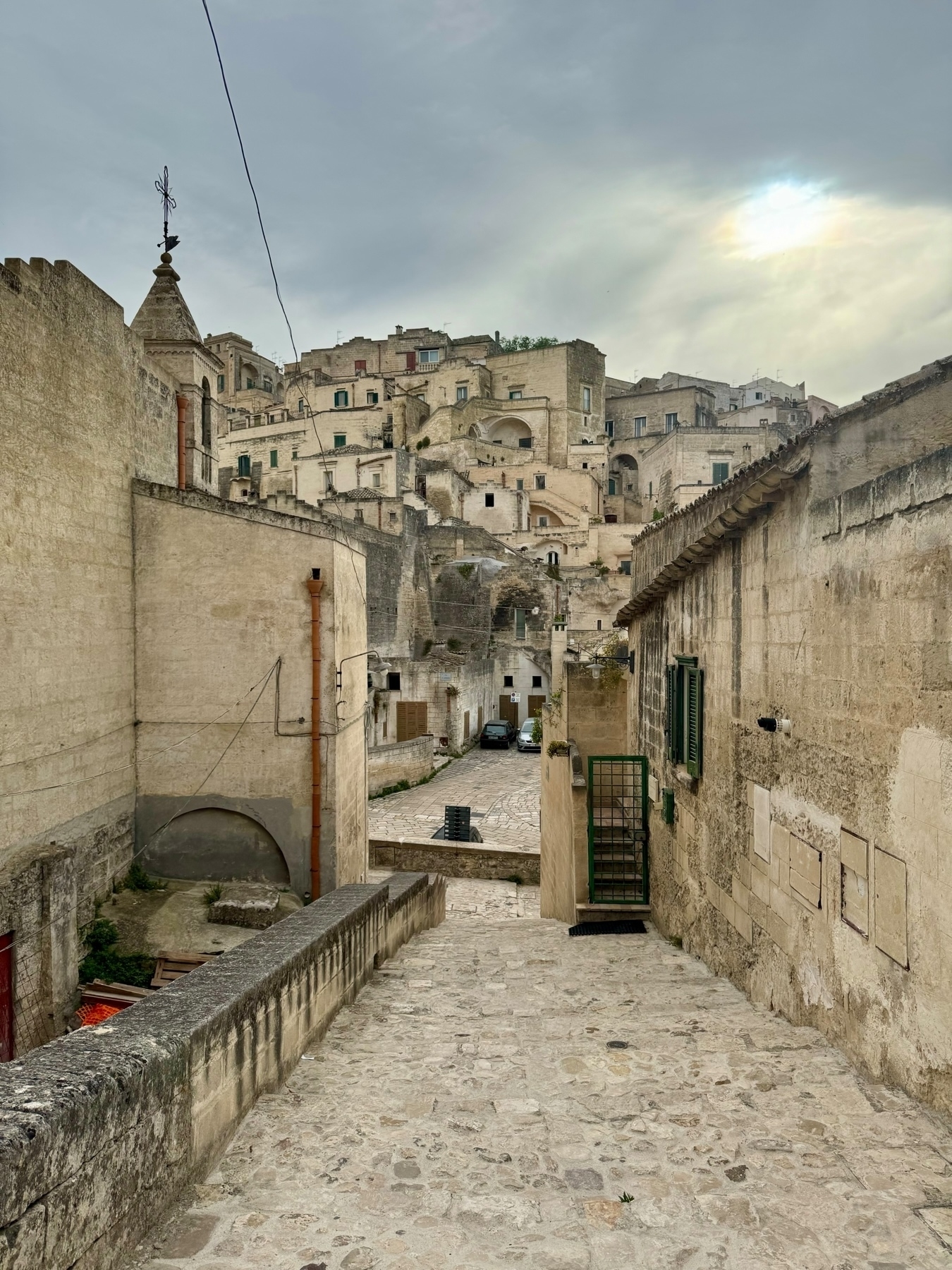
However, it can be a surprising mix, as you’ll pass buildings and areas of the city that still look completely abandoned and right next door is a swanky hotel.


Another view of the historic city. I found Matera to be so fascinating and intriguing. It’s hard to fathom that people have been living here for so long and how hard that life must have been.
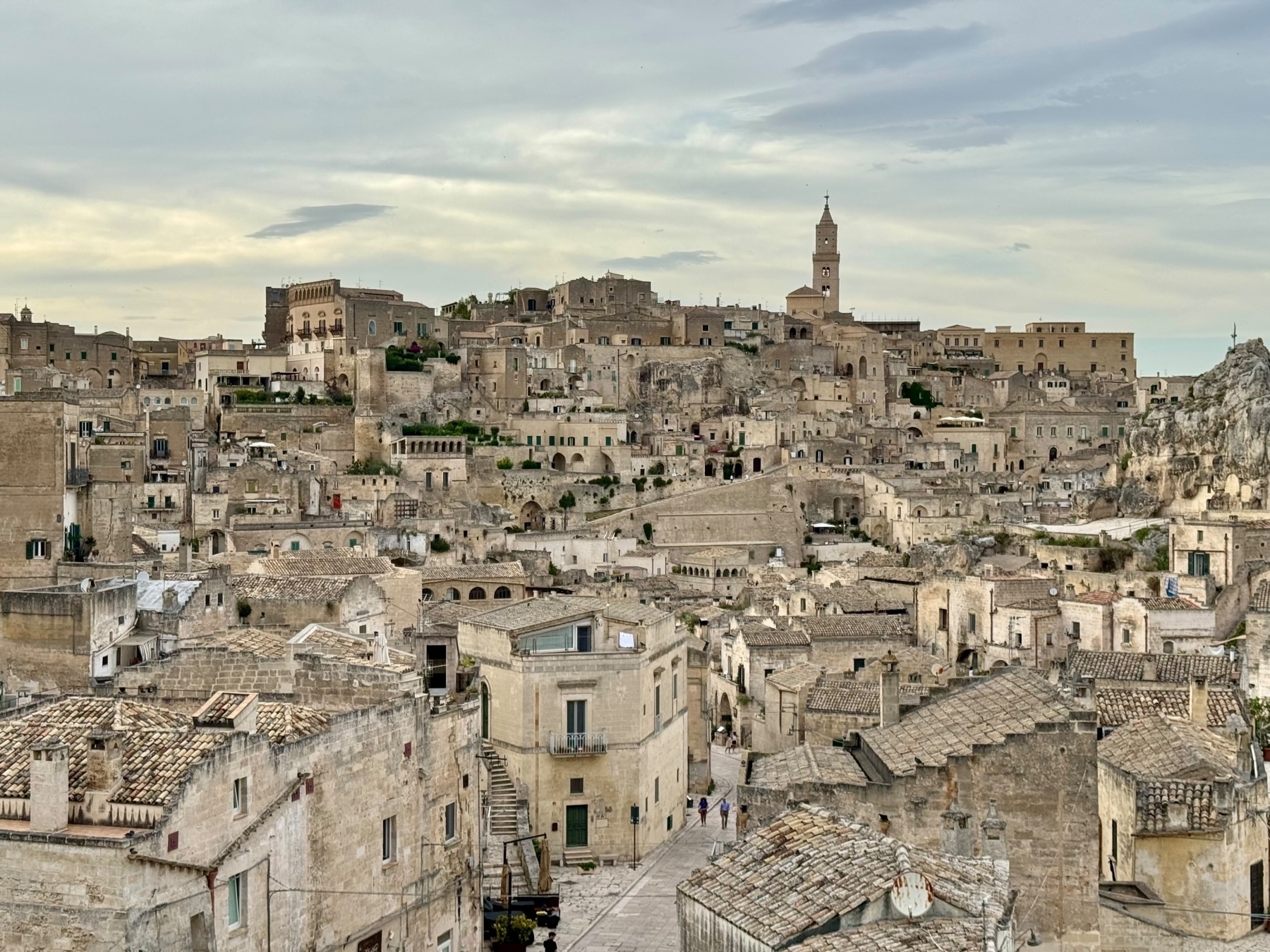
Matera at night is beautiful!

And that brings us to the end of our highlights from Puglia. I really loved this region of Italy. The countryside is beautiful, and we had some of the best food of our trip here. If you visit Italy, I’d highly recommend Puglia. It can be a lot less touristy compared to Tuscany and gives you an opportunity for more authentic experience.
So, we have tonight in Rome, then we’ve reached the end of our time in Italy. It’s been fantastic! I’m happy that we were able to see the big attractions in Rome and Florence and then spend substantial time in the countrysides of Tuscany and Puglia. It’ll be hard to leave Italy!
Ciao!